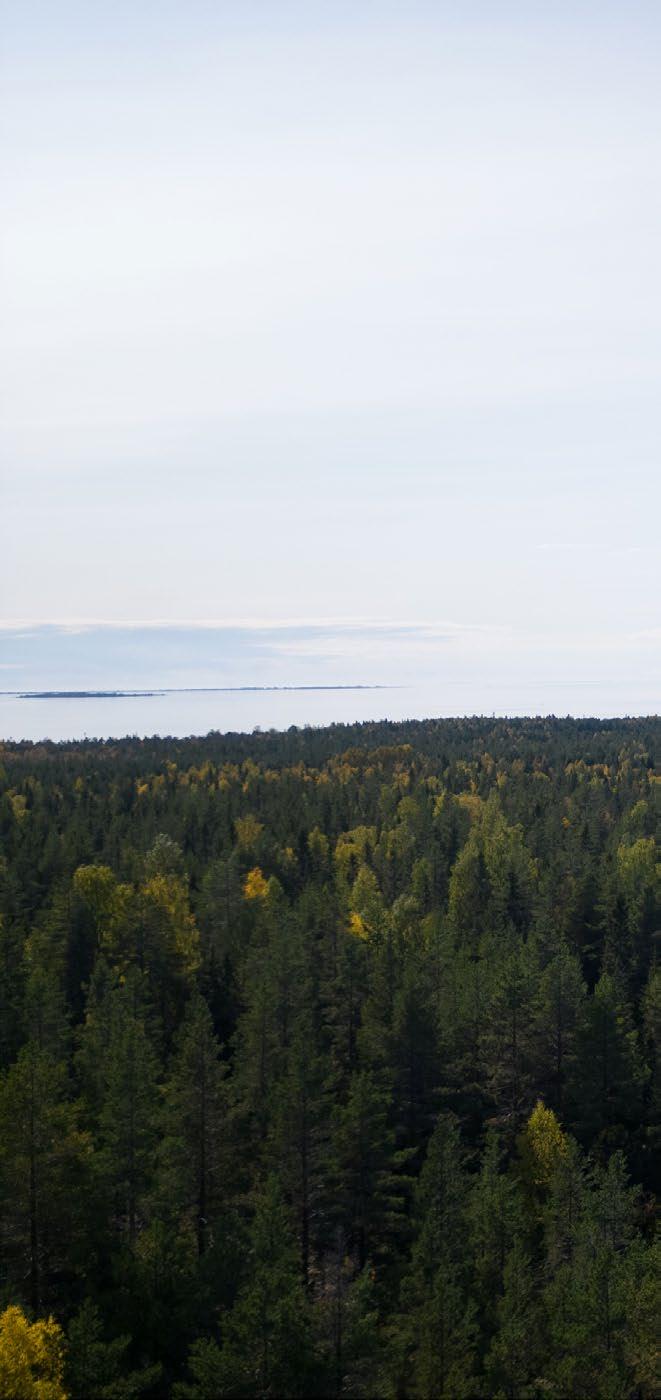2024









































CDT’s mission is to accelerate digital innovations for sustainable impact, based on high quality scientific research.
WE CONNECT ACADEMIA, INDUSTRY AND SOCIETY AT LARGE IN RESEARCH, DESIGN AND INNOVATION, INCLUDING KNOWLEDGE TRANSFER PROCESSES
OUR PARTNERS ARE:
• Academia
• Developers, Suppliers and End-Users of Digital Infrastructure and Solutions
• Society
• Research and Innovation financiers
• Policy makers
CDT OPERATIONS ARE; RESEARCH, DESIGN AND INNOVATION INTEGRATION:
• Projects
• Proposals
• Experimentation
• Spin-off support
NETWORKING AND COLLABORATION
• External (e.g. ENoLL, Net World Europe, EARMA, IoT Forum, North Star, Swedsoft, BDVA, AIOTI, 6G IA)
• LTU internal, partners (e.g. meeting with researchers, partner networking and events)
• Local: Luleå Business & Economic Development, IT Industry Association, IUC Norr, RISE SICS North AB, Luleå Science Park, Skellefteå Science City, Boden Business Agency
• Experience of EU FP 4, 5, 6, 7, Horizon 2020 and Horizon Europe
KNOWLEDGE INTEGRATION AND COMMUNICATION
• Webinars
• Workshops
• Handbooks
• Courses
• Conferences
FUTURE FUNDING INFLUENCE
• Contribution to policies, roadmaps, lobbying, research agendas and programs
• Future studies
• Regional development plans

We are looking for new collaborations in the following areas with great challenges, change and impact.
Smart communities
• Digitalization in cities, regions, and rural areas
• Open data and Data-driven decision making
• Digital Inclusion
• Digital Healthcare and Welfare
• Digital cultural and creative solutions
Cloud and Edge Computing
• Cloud-to-Edge-to-IoT continuum
• Green, energy efficient, datacenters of the future
• Focus on sustainability, security, scalability, and smart algorithms
• Efficient distributed and software defined systems
Digitization for green transition
• Twin Transition - Green and Digital
• Green Traceability
• Smart Grids
• System demonstrators Communication
• Further development and tests around 5G Advanced and introduction of 6G
• Research around 6G
• Rural coverage
• Resilient networks
• Non-terrestrial networks and airspace
• Gender Mainstreaming
• Living Lab, Ethics & Responsible Innovation
• AI
• Cybersecurity
• New Business Models
• Digital Twins

2024 – A year of new steps and growth for CDT
As 2024 draws to a close, it’s time to reflect on the past year here at CDT. It has been an exciting and rewarding year for me as I have had the privilege of taking on the role of Director for this outstanding centre, which celebrates its 30th anniversary this year.
During the year, we also strengthened our team with two new project managers, so that we are now even better equipped to tackle future challenges in the areas of digitalisation, 5G, edge computing and other areas such as the green transition and gender equality. Together with our
partners and colleagues, we have continued to create solutions that drive innovation, sustainability and development.
I look forward to continuing to work with our partners and colleagues in 2025, and together we will build on the strong foundation of CDT and take the next steps to make a real impact through research and innovation.
Thank you to everyone who has contributed to this successful year!
Luleå, January 2025
Björn Backe, Director of CDT
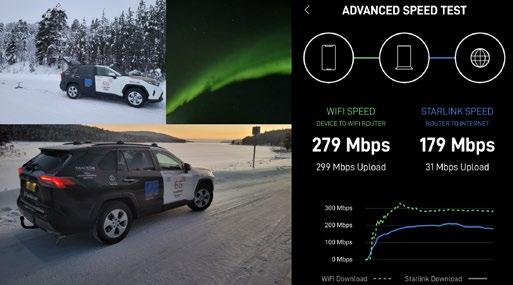
A team from the Arctic 6G project team visited Finland and the Inari region to get a first-hand impression of the challenges of connectivity. This highlighted issues such as inconsistent internet quality and interruptions to phone calls, particularly along roads, which impact work and training in remote locations. The team also tested the Starlink system and recorded downlink/uplink speeds of 147/19 Mbps and 179/31 Mbps at two locations.
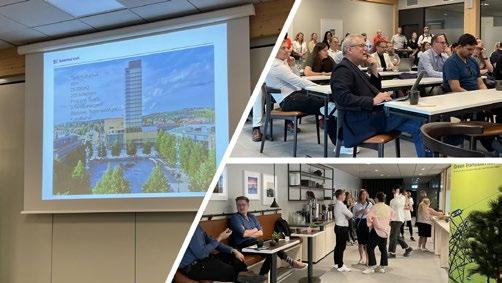
On 29 May, the Green Transition North results conference took place at Sara Kulturhus in Skellefteå. We listened to Patrik Sundberg, Skellefteå Kraft, who received the Grand Engineering Prize 2023 for the energy solution at Sara Kulturhus. Tobias Vahlne, CEO of the Arctic Centre of Energy, also presented the establishment of a cooperation centre for sustainable energy transition. Sub-projects were also presented at the event, including optimised electricity storage in mobile battery units, biohydrogen production, digital product passports and 6G for optimised production processes.

The project aims to develop a modern edge platform and an associated portfolio of edge applications for autonomous mining. 5G and edge computing will contribute to a higher level of automation in the mining industry. More autonomy will in turn lead to a better working environment and safer mines. The overall goal is to create smarter systems that push the boundaries of autonomy, productivity and safety in the mines.

On 6 February 2024, CDT hosted a seminar on “#FullCoverage (#fulltäckning) in the Connected Sweden” at the Grand Hôtel in Stockholm. Speakers on stage included representatives from the Swedish Post and Telecom Agency, Luleå Municipality, Telia Towers, the Swedish Transport Administration, TechSverige, Region Västerbotten, Scanmast, MW Cyber and the National Veterinary Institute.

Preparedness Week was held during week 39 led by MSB (the Swedish Civil Contingencies Agency) and carried out by many organizations simultaneously, aiming to strengthen residents’ resilience. During the week, CDT and the SMALL project organized several events.

In February 2024, CDT hosted a half-day seminar on the green transition as part of the Västerbotten at Grand programme. At the event, featured distinguished speakers, including Cecilia Wallmark, Freddy Jönsson Hanberg, Shiva Sander Tavallaey and Yvonne Björnström, spoke on topics such as the development of hydrogen and its opportunities for overall defence, ABB’s innovation perspectives and the role of hydropower in the green energy transition.

CDT celebrates 30 years of innovation and collaboration!
In 2024, we had the great pleasure of celebrating the 30th anniversary of CDT, LTU’s oldest research centre! The celebration took place in the inspiring surroundings of Teknikens Hus – the perfect location for an evening of innovation and stimulating discussions.
A big thanks to everyone who attended – representatives from companies, local politicians, strategists from the region and our valued funders.
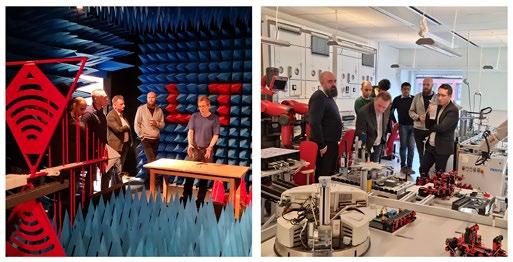
On 27 February 2024, the participants of the VISA/5G project met at Luleå University of Technology. As the project has gained momentum, much attention was paid during the meeting to the configuration of the industrial application of 5G. This application will be tested and evaluated in an industrial use case to illustrate the practical impact of the work. In addition, topics such as the evaluation of hardware as well as tasks related to analysing the required architecture and performance requirements for substation automation in the energy sector were addressed. Participants also took the opportunity to visit some of the labs at the university, namely the Industry 4.0 lab and the EMC lab, to further explore potential collaborations.
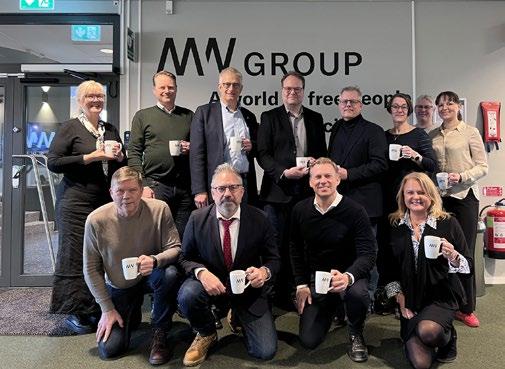
Project meeting for #FullCoverage (#fulltäckning) in Solna. The agenda included topics such as satellite communication, business models, a guide to building a community mast, and more.

CDT showcased several projects during the Mötesplats Lycksele event.
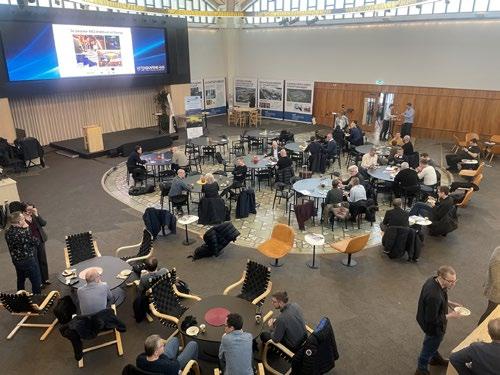
In October 2024, the binding legislation related to the NIS2 Directive came into force. The new regulations covered a broader range of organisations and imposed stricter requirements. As a result, many organisations had to take immediate action to ensure compliance and strengthen Sweden’s resilience, particularly in terms of network security, information systems and continuity planning.
With this in mind, a half-day seminar was held in February 2024 to provide companies with key information to prepare for these changes. The event aimed to help companies understand the new legal requirements and take the necessary steps to protect their operations in line with the NIS2 directive.

CDT was given an overview of ABB’s research activities and a guided tour of the electric motor factory. ABB is a project partner in the Digital Urban Development project and Green Transition North.
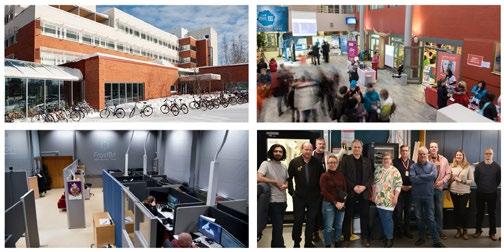
On 19 and 20 March 2024, the Arctic 6G project met at the Lapland University of Applied Sciences in Rovaniemi for a productive series of discussions and activities. Participants were welcomed with a campus tour introducing various labs and facilities. The meeting agenda covered a range of topics including discussions on societal needs and innovations, demonstrations and measurements, internet availability and key wireless technologies such as IoT device localisation and cybersecurity.
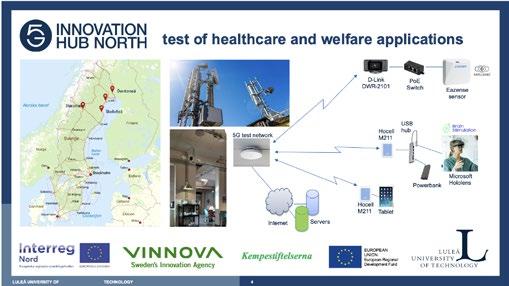
Nordregion featured CDT’s work on 5G for healthcare and welfare in sparsely populated areas in their article, “Exploring 5G Frontiers: Unveiling Strengths and Challenges Across Sectors.”

On 29 May 2024, the PhD students of the Green Transition North project had the opportunity to visit Northvolt, located 10 minutes from the centre of Skellefteå. Northvolt is powered by 100% renewable energy. The visit gave the doctoral students an insight into how a battery cell production plant works.

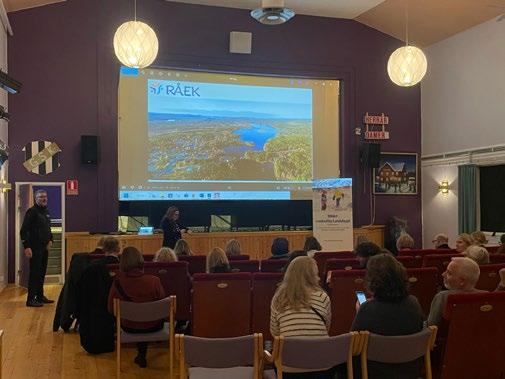
The Swedish Agency for Economic and Regional Growth’s monitoring committee wanted to visit the SMALL-project and see our rural digitalisation pilots in action. We travelled by bus to Gunnarsbyn, where they had the opportunity to see and test some of the pilot projects. These included the digital lock in the village’s second-hand shop, which customises the login options to suit the 27 nationalities living in the area. They also saw the information screen pilot in the local shop.
In the baking cabin, they learnt about the “Bagarstugan” in Brändön, which serves as a meeting place for the youth of the village. The tour ended in the community hall (Folkets hus), where representatives from Boden municipality and Råek shared their perspectives on rural development and local initiatives in the area and the entire municipality.

Sarah Rönnberg, Professor of Electric Power Engineering, is one of the nominees for the “Kraftkvinna of the Year” 2024” award.
Sarah has a long and distinguished career in electric power engineering and her work contributes to overcoming the major challenges and upheavals in the energy sector. Her nomination recognises her expertise and leadership in an industry that is essential to society’s transition to sustainable energy. The award emphasises the importance of expertise and diversity in the energy sector. Attracting talent with a variety of experiences and perspectives is crucial for the industry to evolve in a time of rapid change. Research shows that diversity in work teams and leadership positions leads to better decisions and long-term success.

SVT conducted an interview with Karl Andersson, then director of CDT, about deepfakes and AI.

CDT is pleased to announce that its project partner ThingWave has been nominated by InvestMETS in Australia as a finalist for the “2023 Global Mining Technology Awards” in the category “Best New Mining Technology/ Innovation”.
ThingWave’s 5G-enabled convergence sensor for underground mining was recognised for its ability to “effectively detect the convergence of tunnels and the inclination of walls and other support structures” while providing rapid deformation reports. The wireless sensor is easy to install and relocate. Data visualisation is provided via the ThingWave Cloud or ThingWave RealMine3D.
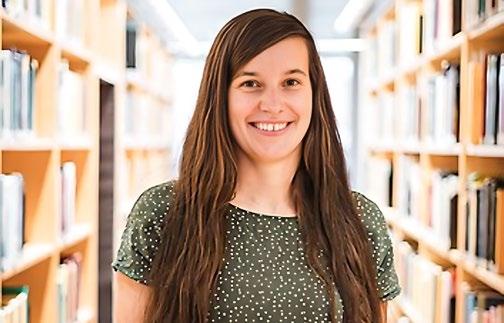
Wiebke Reim, Senior Lecturer in Entrepreneurship and Innovation at LTU, has received the Royal Skytteanska Society Award for Outstanding Young Researcher in the Social and Economic Sciences for the year 2024. The citation reads:
“Wiebke Reim from Luleå University of Technology has quickly established herself as an independent and recognised researcher in a field that is of great importance to the development of northern Sweden. Her research on new business models in a circular and digitalised economy has had a significant academic impact and is of great social relevance. She has successfully attracted research funding and demonstrated strong collaboration both within and outside academia. Wiebke Reim strengthens the scientific environment at her institution and has great potential to continue to do so in the future.”

Luleå University of Technology is the first university in Sweden to receive frequency approval from the Swedish Post and Telecommunications Authority (PTS) to conduct 6G tests in a simulated mining environment. The 6G network is currently being installed in Luleå University of Technology’s underground laboratory.
“This is an incredible opportunity for our telecommunications research. The 6G tests will be a natural part of our focus on future communication technologies, where we aim for breakthrough results. Sixth generation (6G) wireless technology will be able to meet society’s needs in the 2030s,” says Michael Nilsson, project leader at the Centre for Distance-Spanning Technology (CDT) at Luleå University of Technology.
Luleå University of Technology already operates an open 5G testbed for innovation, connected to Telia and Ericsson’s North Star innovation network. The new spectrum permit from PTS enables the university to conduct applied 6G research and actively contribute to the development of the next generation of mobile communications, 6G. The first tests will be carried out as part of the EU project SUNRISE 6G in collaboration with the University of Oulu.

“This is an important milestone in our efforts to contribute to the development of 6G technology, which will be crucial for the communications infrastructure of the future,” says Björn Backe, Director at CDT.
The 6G test licence allows the university’s robotics research group to use radio transmitters specifically for testing in Luleå University of Technology’s underground laboratory.
“In conjunction with this groundbreaking 6G installation, our research group will explore how we can integrate 6G into the field of robotics and automation to improve the efficiency and overall safety of operations in mines and other difficult environments,” says George Nikolakopoulos, Professor of Robotics and Artificial Intelligence at Luleå University of Technology.
The 6G permit granted to Luleå University of Technology opens up completely new possibilities for research into faster, more energy-efficient and more reliable wireless communications.
“6G technology has the potential to revolutionise the way people communicate and interact with digital systems, both in Sweden and worldwide. By being at the forefront of this development, Luleå University of Technology is ensuring that Luleå and Sweden continue to be at the forefront of technological innovation,” says Jaap van de Beek, Professor of Signal Processing at Luleå University of Technology.
We interviewed Alma Fahlén Hammar, PhD student in waste technology at Luleå University of Technology, about sub-project 4 of Green Transition North. It focuses on the production of biohydrogen with the aim of exploring the potential for increased biomethane production in the region.
Tell us briefly about yourself and how you came to do your PhD.
It’s quite a long chain of events. I have completed my MSc in Biotechnology and will graduate from Lund University of Technology at the end of 2023, but I am originally from the Gothenburg area. It was love and curiosity that led me to the PhD position at LTU. It started with my partner taking up a position in Gällivare in the autumn of 2022, which prompted me to look for PhD projects in northern Sweden that matched my interests. I came into contact with Lumire and wrote my master’s thesis on biogas and lived in Luleå from February to June 2023. As I was at the end of my education, I was thinking about my future and looking for a job during this time, while my supervisor at Lumire suggested that a PhD position would be advertised at LTU, specifically dealing with biogas. I had never thought about doing a PhD before, I wanted to apply in industry, but the opportunity to continue working on a topic that I find very interesting and the adventure of moving to Norrbotten appealed to me. It was a learning opportunity, both in terms of deepening the subject and my own development, that I just could not resist. So I applied and at the end of September I sent 22 moving boxes by post and made the entire train journey from Malmö to Luleå. Unfortunately, I am once again in a long-distance relationship, as my boyfriend is in Gothenburg to finish his studies. But I am staying for a while so that he has time to move back up.
The project is about diversifying hydrogen production with biohydrogen, i.e. hydrogen of biological origin. In this project, the focus is on biomethane as a source of hydrogen gas. Biomethane is a major component of biogas, a gas mixture produced by the microbiological decomposition of organic material in an oxygen-free environment. Examples of organic substrates are the residual streams of food waste, sewage sludge and liquid manure. Biomethane is in itself a fossil-free energy, but the demand for hydrogen is increasing and therefore biomethane could be a source of biohydrogen gas. In this thesis the local possibilities for an extended biomethane production are analysed. One part of the work is to check the availability of substrate to intensify biogas production on site. Another part of the work could be to analyse the operation of the biogas process itself in order to be able to influence the final amount of biomethane. In general, it can be said that the project is about investigating how local resources can be mobilised and managed in an appropriate way.
Why have you focussed on this area in particular?
Interest in hydrogen is growing and it is expected to be an energy resource of great importance for the green transition. The transition from fossil energy sources places high demands on access to alternative energy, and to manage the transition will require all the fossil-free energy supplements you can get. Exploring a fossil-free energy type that can also be a source of hydrogen can facilitate and support the transition to fossil-free technologies,

and therefore it may be important to explore several different pathways to more hydrogen.
Do you already have industrial partners involved?
Today we are primarily working with several companies that have local connections, first and foremost Lumire (Luleå Miljöresurs AB), but AFRY, H2 North and Uniper are also involved in the project. Perhaps other players will join in over time, we will see!
What results do you hope to achieve?
The hope is that the work will benefit both the stakeholders involved in the project and society as a whole by exploring and potentially improving access to a fossil-free form of energy. It is hoped that the work will show which factors are crucial for the expansion and rationalisation of the fermentation of organic material.
Can you say anything about potential challenges and obstacles?
It’s difficult to say at this early stage. I think that the vast majority of results, whether they are positive or negative in terms of the desired image of an actor, can be used to say something about what should or should not be done, and that a new process can be set in motion from there. Hopefully research can lead the way. At the same time, there is a clear collaboration between science and industry in this project, where the golden path between technical innovation and economic and practical feasibility can of course have some influence on the direction of the research. The circular economy is also an important factor in connection with the topic and must be included in the considerations.
What are the potential benefits for industry and society?
For both industry and society, the work could lead to a change in the way local resources are utilised. In the best-case scenario, more fossil-free energy can be made available as part of a circular economy.

Environmental monitoring in industrial, rural, urban and forestry areas is crucial to understand, monitor and mitigate the impact of human activities on existing ecosystems. Conventional monitoring methods often reach their limits, e.g. in terms of accessibility, infrastructure costs and coverage as well as long deployment times. Autonomous aerial drones equipped with in-built sensors, a global navigation satellite system (GNSS) and the ability to deploy battery-powered smart sensors or connect to existing monitoring nodes on the ground offer a promising solution to overcome these challenges.
In a forestry environment scenario, by utilising the autonomous flight capabilities of drones connected to the cloud infrastructure via the existing 5G mobile networks, it is possible to both process the collected data and control the trajectory of the autonomous drone along the target area. To enable monitoring on the ground, the drone can also have some IoT sensor nodes on board, which are dropped at the desired points during the autonomous flight and deployed in the forestry environment.
In this way, the dropped sensors, as well as the sensors manually installed in the target environment, can collect important data for several hours and communicate with the drone performing a planned autonomous flight several decades above the ground, enabling IoT connectivity in the air, with the 5G connected drone acting as a wireless relay (using various heterogeneous wireless protocols such as Wi-Fi, BLE or LoRa) to exchange data with the devices on the ground. Exchange data with devices on the ground that cannot communicate directly with existing cellular or IoT infrastructure due to high vegetation or density of obstacles.
The above-mentioned sensor nodes can be equipped with multiple sensors that enable monitoring of humidity, temperature and air, as well as a long-life battery that enables operation for up to several days, depending on the data collection rate. To communicate with the UAV while conserving battery life, scheduled communication windows with the drone only occur a few times per day or per week. Only the anomalous and critical data is sent to the nearby drone, using a different wireless technology based on both the distance between the two parts of the communication and the amount of data to be transmitted. All data collected by the drone is then sent via an LTE or 5G cellular connection to the cloud infrastructure, where the data is then processed and presented on a dashboard that can be visualised by the operator and authorities.
In industrial and rural urban areas, autonomous drones equipped with various types of connectivity can be used to communicate with nodes on site during surveys and critical missions, where the sensor data on site together with the sensors on board the drone can provide additional information suitable for a more thorough exploration of the industrial site as well as for monitoring rural urban areas.
As with the forestry scenario, the sensor nodes on site can communicate directly with the wireless communication infrastructure via cellular or LoRaWAN technologies, while point-to-point communications with the nearby drone can take place via BLE, Wi-Fi or LoRa, depending on the range and volume of data to be transmitted. Once the data has been collected by the drone, it is transmitted via 5G mobile networks to the cloud platform, where it is processed to detect anomalies and alert the authorities.
The AMBITIOUS project, funded by the European Union, will work with this, among other things.


Mikael Börjesson has been appointed as the new chairman of the hydrogen initiative at Luleå University of Technology, CH2ESS (Centre for Hydrogen Energy Systems Sweden). He has a long history at LTU, where he led the development of CDT for more than 15 years.
Can you tell us more about the CH2ESS research center and what goals you are pursuing with your work?
Mikael has more than 40 years of experience in industry and academia. He has a long career in innovation and IT development and has worked as a consultant at national and international level. He has also founded six companies. “Hydrogen is a technology that offers both great opportunities and challenges. This makes it an area where successful research and business development can thrive,” says Mikael Börjesson.
experience in innovation
In addition to his new role, Mikael Börjesson is active in his own company, Aialax AB, where he helps companies to work more systematically and effectively with innovation and development.
“I believe that my experience from previous collaborations between academia and industry can be of great benefit to CH2ESS and the hydrogen initiative.”
goals
One of the first tasks will be to further familiarise himself with the processes and gain an overview of the various needs and interests within CH2ESS. In co-operation with the management team and the steering group, Mikael Börjesson will work on defining an initial focus for his work.
“It is important that my goals as Chairman are in line with the long-term goals
of the organisation. My first step will be to immerse myself in the work and see how we can best contribute to development.”
In the long term, Mikael Börjesson hopes that CH2ESS will contribute to the establishment of more new companies, patents and the international recognition of Swedish hydrogen research.
Mikael Börjesson sees several ways in which he can contribute to CH2ESS’ ambition to become a leading knowledge-based player in the hydrogen sector, both in the Nordic region and in Europe. He also sees great potential for small and medium-sized enterprises to become an important part of the further development of hydrogen technology.
“We are well placed to establish CH2ESS as a central knowledge hub and innovation platform for hydrogen technology and sustainable energy systems. It is an exciting field with great opportunities for both research and entrepreneurship.”
Cecilia Wallmark, Director of CH2ESS, is looking forward to Mikael Börjesson’s contributions to the organisation. After three successful years, it is now time for CH2ESS to further strengthen its structure and direction.
“I welcome our new Chair, who will help us to further develop our work and sharpen our focus,” says Cecilia Wallmark.

We interviewed PhD student Christoffer Alenius about his work in the sub-project “Energy-efficient cultivation” within the Green Transition North project. His research focuses on the utilisation of waste heat from server rooms to supply to greenhouses, which also serve as educational facilities and resources for local vegetable production. The aim of the project is to optimise energy consumption, explore synergies between different industries, integrate renewable energy sources and create economic business models for a sustainable food supply.
is the sub-project about?
The project is about finding energy solutions and optimising the reuse of heat between industrial parties that do not otherwise work together. This is known as industrial energy symbiosis. The project focuses on the energy symbiosis between greenhouse cultivation and data centres in the north.
What synergies do you see between the different industries when it comes to energy-efficient cultivation and waste heat utilisation?
Waste heat can be reused in practically any industry where it is a by-product. However, the area of application depends on the temperature of the heat. Greenhouses generally require low temperatures. Warm air of around 30–40 °C would be sufficient. Data centres have a very high cooling requirement in order not to damage
the IT equipment. They are therefore considered to be large producers of low-grade heat, which is usually simply released into the empty air. This is not very resource-efficient. Let us assume that a data centre and a greenhouse form a specific energy system. Using a greenhouse as a heat sink for the data centre extends the life cycle of each energy unit and reduces the total energy demand of the entire energy system.
What challenges do you think we face in implementing energy efficient cultivation and waste heat recycling and how can these challenges be overcome?
One of the biggest obstacles with energy symbioses is that very few people know how to set them up effectively. Good communication between stakeholders and an efficient energy transport infrastructure are required. When
it comes to energy symbioses between data centres and greenhouses, it is important that the needs of both parties are met. Are the data centre and the greenhouse sized correctly for each other? Are there any problems that may arise and for which one of the parties must be prepared? Good planning is the basis for effective collaboration.
The use of free cooling for data centres is very common here in the north. Then you let the outside air flow over the processors. This is usually a simple way of cooling, and air is also an easy medium to transport to nearby buildings. However, data centres can also use a variety of other cooling methods. The energy symbiosis between greenhouses and liquid-cooled data centres has been little explored. More effort would therefore be required to find out how usable this residual heat is for this purpose.
What results do you hope to achieve?
• We want to find out how to effectively set up an energy symbiosis.
• What effects energy-saving measures in greenhouses and different electricity utilisation have on the energy 0symbiosis.
• Which other cooling methods for data centres can be used as a heat source for greenhouses in addition to free cooling.

In 2024, CDT launched the project Digital 2030, aimed at securing a robust future for small and medium-sized enterprises (SMEs) in Upper Norrland by advancing the fields of Cloud, Edge, and IoT. This ongoing initiative is actively supporting digital innovation, development, marketing, and export, establishing a strong platform for growth and competitiveness in the region.
Through Digital 2030, CDT offers targeted assistance to help businesses navigate digital transformation. Participating companies gain access to 5G and Edge testing environments via the North Star innovation network, enabling them to experiment and develop innovative solutions.
The project is being carried out in close collaboration with local chambers of commerce and incubators, connecting SMEs with relevant partners, organisations, and networks to support digital innovation and expand growth and export potential.
Digital 2030 overarching goal is to enhance the benefits of digitalisation by promoting innovation within these industries. By supporting new ideas, product development, and business growth, Digital 2030 empowers companies to become prominent players in Northern Sweden’s emerging digital ecosystem. The project also encourages a more efficient use of advanced technology through 5G and Edge testing environments, backed by ongoing research and innovation.
The main funders are the European Regional Development Fund, Region Norrbotten, and Region Västerbotten.

As part of the Digital Urban Development innovation project, we worked together on the digitalisation of a city district with the aim of improving energy efficiency and reducing the carbon footprint. By installing energy metres and visualising energy data, we also have the ability to measure power quality, which provides insight into how much energy is being lost in the system, often up to 8%. By analysing where and how these losses occur, we can take corrective action. This requires better metres and effective analysis tools.
The triple-loop model for knowledge extraction
In this innovation project, we have introduced a model for extracting and transferring knowledge from ongoing projects, the so-called triple-loop model. This model involves a learning expert who acts as an observer and identifies new knowledge resulting from collaboration between technical experts. This knowledge is then extracted from the project and transformed into insights that can be shared with other experts without losing its timeliness and relevance.
The project brings together leading electricity and energy experts from various organisations, including:
• Skellefteå Kraft: grid owner and electricity supplier
• Skellefteå Municipality: Property owner
• Luleå University of Technology: Expertise in power quality
• Installers and electrical consultants
When planning the metering system with ABB’s Ability Energy Manager, several disciplines had to work together to determine the required metres and their placement. It was crucial to find a balance between the cost of the equipment and ensuring accurate data for analysis.
Key stakeholders in the project included:
• Lars Hjelmberg: Product specialist from ABB
• Sarah Rönnberg: Professor of Electrical Engineering at Luleå University of Technology
• Patrik Sundberg: Representative of Skellefteå Kraft
• Richard Jonsson: Representative of Skellefteå Municipality, together with others
They worked together to develop a cost-effective measurement system that can detect power quality problems.
Although it is becoming increasingly common to digitise buildings to measure energy consumption, knowledge about power quality is still limited. Power quality is an important component of energy efficiency and can be of great value to property owners. It is particularly cost-effective to collect this data when installing devices to measure energy consumption.
Although the project has another year to run, it has successfully tested a model for extracting knowledge from advanced digitisation projects. It shows how knowledge can be shared quickly among experts and still remain relevant. A key finding is the significant knowledge gap in the use of digitisation projects to assess power quality savings.
The project is funded by VINNOVA and led by Luleå University of Technology and CDT in collaboration with Skellefteå Municipality, Skellefteå Kraft and ABB.
We interviewed PhD student Aditya Sissodiya about his work in the Green Transition North-project regarding “Digital Product Passports”.” The project is developing technologies to implement the Digital Product Passport (DPP) planned by the EU, which enables the traceability of product components and promotes sustainable purchasing decisions.
Through decentralised blockchain applications, the project ensures a secure exchange of information and improved collaboration between actors in the supply and value chains. Research focuses on advanced access control systems to protect sensitive data and maximise value creation from available product information.
What specific problems or challenges are you trying to solve with your research work?
The main challenges we are addressing with our research are controlling data access and adding value through product traceability and sustainability insights. These are important to ensure that the DPP fulfils its purpose in supporting the circular economy while protecting sensitive information. In a system like DPP, where a huge amount of detailed product information is stored digitally, not every piece of information should be accessible to everyone. For example, a recycling company might need access to data about the materials used in a product, but does not need to know proprietary information about how the product was made. Similarly, consumers might need transparency about the environmental footprint of a product without having access to the entire production process. We are working to automate the negotiation of access control policies to make this process faster and more efficient, even in complex digital ecosystems.
Key topics in the area of traceability and sustainability are ensuring full traceability of all parts of a product’s life cycle, from raw material sourcing to end-of-life recycling. This helps to promote responsible production and consumption. Providing the necessary data and insights to reduce environmental impact, optimise recyclability and promote long-term sustainability. Once we have access to all this consolidated data about products, the challenge is to make meaningful use of it. Our research aims to solve the challenges of access control and data utilisation in DPP systems to promote both traceability and sustainability throughout the product lifecycle.
The DPP is critical for both consumers and businesses because it brings transparency, accountability and sustainability to the forefront of product lifecycles. By making key information about products accessible in a clear and structured way, the DPP enables people and businesses to make more informed and responsible decisions. With a DPP, consumers can easily access important details about a product, such as the materials used, how it was made, its carbon footprint and its recyclability. This level of transparency creates trust as consumers can verify the sustainability claims made by companies. The DPP enables consumers to make decisions based on more than just price and appearance. It provides them with detailed insights into

the environmental and ethical impact of a product. For example, if a product is made from recyclable materials or has a low carbon footprint, this information can help consumers choose products that align with their values and support environmentally friendly and sustainable consumption. Greenwashing occurs when companies make false or misleading claims about the environmental benefits of their products. The DPP combats this by providing verifiable data on the sustainability of a product. This means that companies can’t just use vague or unsubstantiated marketing terms, but that consumers can see the real facts, such as energy consumption, material composition or recycling potential. This makes sustainability claims transparent and verifiable, so that companies cannot mislead their buyers.
Are there any companies that you work with or that are associated with your work?
Yes, we are fortunate to have ABB, Stegra and Mobiliaris working with us.
Beyond environmental sustainability, how do you think the DPP can benefit the industry?
1. Improved supply chain efficiency:
Supply chain transparency is a key benefit of the DPP. When companies have accurate, real-time information about every stage of a product’s lifecycle, they can improve inventory management, streamline logistics and optimise resource allocation. This level of detail can help industries identify bottlenecks, reduce waste and improve overall operational efficiency.
2. Product quality and innovation with data-driven decision making:
The data collected in DPPs provides insights into the performance of products over time, leading to better product development and innovation. The industry can analyse product usage data, failure rates and customer feedback to refine designs, improve durability and develop more user-friendly products.
3. Improved regulatory compliance:
Many industries, particularly in healthcare, food production and electronics, are subject to strict regulatory requirements regarding safety, traceability and material usage. The DPP can serve as a comprehensive data set that helps companies comply with these regulations more easily by providing accurate, transparent data on a product’s materials, sourcing and compliance with relevant standards.
4. Build consumer trust and engagement:
Beyond sustainability, the DPP provides a mechanism for companies to engage consumers more directly with transparent product information. Consumers increasingly want to know not only about a product’s environmental impact, but also about ethical sourcing, quality and safety. By offering detailed, verifiable product data, companies can build brand loyalty and trust.

We interviewed PhD student Rajith Eranda regarding his work in the Green Transition North-projects and in the sub-project “Increased flexibility in the power system,” which focuses on developing smart energy systems.
It aims to develop methods to analyze how various flexibility solutions impact the power grid. The activity is intended to provide decision-makers and grid owners with better tools to make informed decisions and create a more robust and reliable power system. The goals include flexibility in consumption and production to determine acceptance limits, developing methods to quantify the benefits of flexibility for the power grid, and comparing and developing flexibility services.
What is the sub-project about?
A renewable-rich, sustainable power system is a key player in the journey toward the Green Transition. So, the interest in adding more renewable-based generation to the grid by replacing conventional generators has increased rapidly. At the same time, challenges to power system reliability and stability due to high penetration of renewables and distributed generation have become a great concern. Increasing power system flexibility is a solution to handle these challenges while welcoming more renewables to the grid.
What specific problems or challenges are you trying to solve with your research work?
Adding more and more renewables to the grid can impact the reliability and stability of the grid mainly due to the intermittent nature of renewable-based generation. So, the modern power system should be more flexible to handle these uncertainties to keep the power system stable and welcome more renewable generation. Demand-side flexibility is a major component of power system flexibility that activates through flexible generation and consumption. Assessing the impact of demand-side flexibility, quantification of flexibility
provision, and determining limitations is advantageous for both power system operators and decision-makers.
What have you discovered so far in your research, and what results do you expect in the future?
So far, we have been able to model flexibility provision through flexible energy storages considering system-wide and local flexibility solutions in an LV test network. Then to demonstrate the effect of activating Energy Flexibility for distribution grid voltage levels. From that estimate LV network capacity for flexible energy storages. Further, the role of local flexibility through voltage support flexible energy storages was studied. The study will be extended to other types of flexibility resources, solutions, and further possible issues to the distribution grid.
Are there any business collaborations related to the work?
Yes, ABB, PiteEnergi, and Skellefteå Kraft are among the partners that we are closely working together with. Their input to the research work has been a merit in identifying industry needs and to accessing some of their resources.
How can decision-makers and power system owners use your research to make more informed decisions?
Mainly the research can be used to increase the power system flexibility by the power system operators. Specially, Distribution System Operators can use the research to be aware of possible impacts on the Distribution Grid by activating flexible resources. Hence the limit of flexibility provision that they can handle without disturbing their operations. Also, to see possible ways to improve the limits within the available grid resources. At the same time, Transmission System Operators can also be aware of the limit of harnessing flexibility from the LV grid level. On the other hand, the decision-makers can be able to use the results for developing policies and standards for increasing power system flexibility.

The Rural ICT Testbed – #fulltäckning project has made remarkable progress in creating attractive and competitive rural communities by enhancing mobile broadband access. Since its launch in 2021, the project has expanded mobile coverage in areas previously disconnected from modern networks, improving the quality of life and economic opportunities for residents in some of the most remote regions, like the mountains of northern Sweden as well as in the Luleå archipelago.
The project has created knowledge and understanding about rural needs, mechanisms for how to establish cellular solutions in the rural, and it has used all these insights in three tangible technology results. A first result of the project is a new, first-of-a-kind rural mobile network along the Kungsleden trail in the Abisko mountains, characterized by a pioneering integration of fully autonomous base stations in an area with little infrastructure, no roads, electricity or fibre connections. With the help of the project, a new commercial enterprise and a new non-commercial association have been established.
A second result is a new rural archipelago-based societal cellular tower on the Storbrändö island that enables provision of connectivity for residents, companies and visitors in a large part of the Luleå archipelago. Finally, the project has contributed to the development of ultra-large-cell technologies, particularly tailored for connectivity in rural regions, from high towers and providing coverage over hundreds of square kilometers, with a single base station. The project has tested, piloted and evaluated these innovations in concrete scenarios and with representative users.
Beyond providing technology, the project has influenced key decision-mak-
ers in the area of rural needs at local, regional and national levels. Through seminars and meetings with policy makers and mobile operators, as well as publications, the project has successfully raised awareness for regulatory change. It has also submitted influential documents in response to government investigations, ensuring that rural connectivity remains a priority on the national agenda.
Jaap van de Beek, chaired professor of Signal Processing at Luleå University of Technology, says:
— Thanks to the many project partners and their co-ordinated efforts, the vision of full mobile broadband coverage for rural areas has moved closer to reality.
The project has employed a collaborative model and effective solutions tailored to the specific needs of each region. The project not only improved mobile coverage for isolated regions, but also laid the foundation for further progress in digital infrastructure in rural areas. This project serves as a foundation for future initiatives and demonstrates the impact of combining innovative technology with strategic partnerships and policy to bring essential connectivity to rural areas.
We interviewed Adam Isaksson, PhD student in process metallurgy at Luleå University of Technology, about sub-project 12 of Green Transition North. The work aim is to develop a new method for recycling black pulpmass.
Tell us briefly about yourself and how you came to do your doctorate.
I graduated from the previous Sustainable Process and Chemical Engineering” programme at LTU in 2018. After that, I worked in the mining and steel industry for almost six years, where I held various engineering positions in production and research. I always had the idea of doing a PhD one day, but I was waiting for a suitable topic. Now the opportunity arose to do a PhD in a growing and exciting field that will become even more important in the future.
What is sub-project 12 “Improved hydrometallurgical process for the recovery of black mass from lithium-ion batteries” about?
The project is about developing a new method for recycling black mass, a fine powder that comes from lithium-ion batteries and contains valuable metals such as lithium, nickel, manganese and cobalt. The current recycling method is based on leaching, where the powder is dissolved with sulphuric acid, after which the metals are separated using a method called solvent extraction. This method has some inherent disadvantages. Solvent extraction requires hazardous and environmentally harmful solvents that are based on fossil raw materials. It is also a rather expensive and flammable process.
Northvolt is your industrial partner. What is it like to work with them?
The collaboration with Northvolt works well. We have regular meetings where we discuss the project and any problems we have encountered during our experiments in the lab. Northvolt provides both technical expertise and material for the project.
What can be recycled from a lithium-ion battery?
Plastic, copper and aluminium are examples of material streams from the mechanical recycling of lithium-ion batteries. This means that the batteries are cut into pieces and then separated by sieving and various physical methods. Black mass, graphite and electrolyte are further examples of material streams from recycling. These often have to be further processed using both mineral processing and pyro- and hydrometallurgical methods before they can be used to manufacture new batteries.
What are you investigating now compared to a conventional recycling method?
We are investigating whether a technique called electrodialysis can replace or supplement solvent extraction in separating the metals after leaching out the black mass. Electrodialysis utilises a difference in electrical potential across a series of ion-selective membranes to separate the metals. The main advantage is that less hazardous chemicals are required compared to solvent
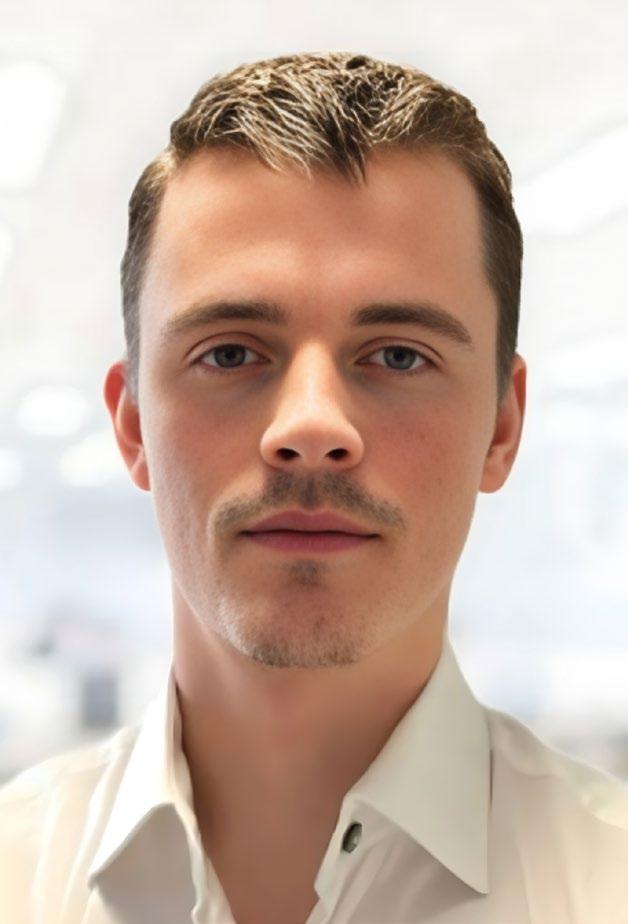
extraction. This in turn makes for a more environmentally friendly process. Electrodialysis has the potential to become a green alternative to solvent extraction.
What results do you hope to achieve?
We hope to recover as much metal from the black mass as with solvent extraction. At the same time, we want to achieve a high product quality so that the metals can be used for the production of new batteries. Then, of course, it is important that our method becomes an economically viable alternative to solvent extraction.
Can you say something about possible challenges and obstacles?
Electrodialysis has not yet been used industrially in this type of application. Traditionally, it has been used to desalinate seawater for drinking water or to produce table salt. One challenge is to prevent precipitation on the membranes, otherwise there is a risk that they will not function properly. Another challenge is the water balance, i.e. limiting the amount of water used, which is important from both an ecological and an economic point of view. We want to minimise the amount of residual products and possibly recycle the residues that are produced.
We interviewed PhD student Simon Johnsson about his work in sub-project 1, which examines how 6G technology can help optimize production processes within the Green Transition North initiative. 6G is expected to have advanced sensing capabilities that can identify, authenticate, locate and track large numbers of objects. This will be crucial for the control and streamlining production using metadata, metasurfaces and digital twins.
What is the sub-project about?
The main focus of this project is to improve user localisation in mobile networks through the use of intelligent reflective surfaces. Currently, it is possible to localise users in mobile networks, but these methods often require a clear line of sight to multiple base stations. Our concept is to use intelligent reflective surfaces instead of additional base stations, which would reduce the need for a dense network of base stations, ultimately resulting in a less complex network.
What are intelligent reflective surfaces?
Intelligent reflective surfaces, or reconfigurable intelligent surfaces (RIS), are a type of meta-surface that can be used to control how signals are reflected from the surface. With a normal flat surface, a signal would be reflected as in a mirror, but with these smart surfaces we can control the reflection of signals to a higher degree. What makes the use of these smart surfaces less complex compared to base stations is that the surfaces themselves do not process the signals. They simply reflect the signals in a predefined way.
By localisation I mean determining the position of, for example, a mobile device within a certain area. This can be applied to various use cases, e.g. in factories where autonomous robots that know their location within the environment are increasingly being used.
The reason we focus on localisation in 6G is that this network is intended to serve more as a bridge between the physical and digital worlds than previous generations. As 6G networks are still in the development phase, we also have the opportunity to influence how the standards for such a network might evolve if we find something that could be improved.
What specific problems or challenges are you addressing in your research?
To go into more detail, intelligent reflective surfaces are a relatively new area of research that is attracting more and more attention, but the industry has not yet adopted these surfaces. One challenge I would like to address is to demonstrate that reflective surfaces can be a viable alternative in the design of networks.
Another problem I am addressing is the fact that in most current research, intelligent reflective surfaces are directly connected to the network, enabling real-time control. However, I want to decouple them and make them more independent from the network to reduce system complexity. The challenge with this approach is that we lose a certain amount of control over certain aspects.

What have you found out so far in your research and what results do you expect?
So far I have spent a lot of time reviewing current practises and familiarising myself with the challenges involved. I have also started to investigate the theoretical best outcomes for localisation, both with and without intelligent surfaces, to better understand what is preferable in different scenarios. The goal of my current study is to determine the parameters within which reflective surfaces can provide similar or better localisation results.
Have you encountered any challenges in your work?
A major challenge was to accurately describe the problem using a mathematical model. I have gone through several iterations of the model and now believe that I have arrived at a model that adequately captures the necessary aspects.
Do you have any companies involved in the project?
Yes, Ericsson is involved in the project and one of my supervisors is from there. I also spend one day a week in their office to further strengthen the collaboration.

Johanna Lindberg from Luleå University of Technology has successfully completed her PhD and presented groundbreaking research findings that show how rural municipalities are actively driving digital transformation in their own regions. Her study, which is part of the DigiBy and SMALL projects, shows how village shops and local associations are implementing digital services to improve the quality of life in areas between urban centres.
“Digital transformation in rural areas is about much more than broadband and mobile phone coverage. It’s about introducing digital services that strengthen communities, create jobs and breathe life into rural areas,” explains Lindberg.
In the DigiBy and SMALL projects, researchers, businesses and community stakeholders worked with residents to tailor digital services to their individual needs. Lindberg’s thesis shows that rural stakeholders play a central role in this development and challenge national digital policy, which often follows a “one-size-fits-all” approach. With more than 20 years of experience in regional and local development in areas such as environmental management, public services, equality and digitalisation, Lindberg has been actively involved in policy development both as a researcher and as a civil servant.
The study highlights the importance of a local and inclusive strategy in digitalisation that strengthens rural empowerment and community growth.

The 5G Edge Innovations for Mining project recently visited Boliden’s Kankberg mine to test innovative automation solutions for mining based on 5G and edge computing, as well as solutions developed as part of the project. The project has also developed tools for analysing the quality and performance of mobile networks, which have now been tested in the underground 5G network installed in the mine as part of Northstar — an innovation network for advanced industrial applications developed by Telia and Ericsson. Northstar is used, among other things, to test new technologies in the mining industry. Experiments were conducted at the Kankberg mine to visualise how sensor data collected via devices connected to the 5G network was transmitted to the edge nodes and analysed there, and the results were presented.
Part of the experiments focused on visualising measurement data from the 3D lidar, which can create 3D images of mine tunnels or be used for underground safety solutions. During ongoing operations, network performance was monitored in real time to ensure that the network was functioning optimally in both the short and long term, which is crucial for the automation of mining operations. Participants included ThingWave, BI Nordic, RISE, Flasheye and Luleå University of Technology.
This work is part of the Vinnova-funded 5G Edge Innovations for Mining project, which aims to develop a modern platform and a range of smart applications to make mining more autonomous, representing a significant step forward in the digitalisation and automation of the mining industry.
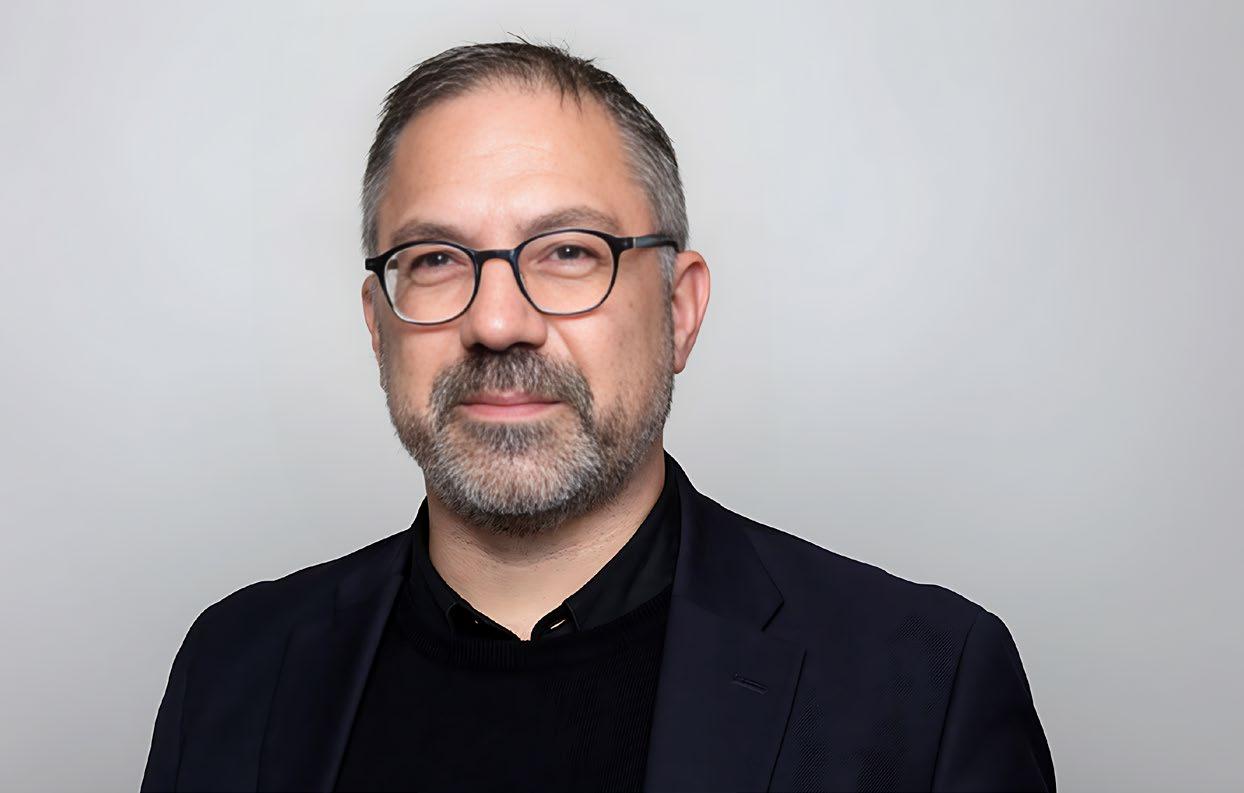
CDT is proud to introduce Karl Andersson, our former CEO, as the new Head of the newly established Cybersecurity Research Division.
How does it feel to become Head of Cybersecurity?
– I am very grateful for the trust to lead Luleå University of Technology’s efforts in cybersecurity and to establish a completely new research subject. The opportunities are great, but I am also humbled by the task.
Why is cybersecurity important?
– Digitalisation in the private sphere as well as at work and in society as a whole has created enormous opportunities for improved communication and information sharing. At the same time, vulnerability is increasing as more and more systems become critical to operations. This is where the security aspects come in, where we increasingly need to consider resilience and resistance to cyber threats as systems evolve.
What is your vision for the subject?
– The vision for Luleå University of Technology’s activities in cyber security is that we quickly become a powerful and relevant hub for developing knowledge and skills for students and cooperation partners in industry, the public sector and civil society.
How concerned are you yourself with cyber security?
– As a long-serving reserve officer in the Signal Corps, I have had this mindset since my time in the military. However, conditions are constantly changing, so naturally I have to re-evaluate my own security measures.

In today’s digital landscape, artificial intelligence (AI) has become a key driver of innovation and business development. AI has the potential to profoundly change business processes – from streamlining and automating workflows to creating entirely new business models. The right use of AI can give companies a significant competitive advantage, while not utilising the technology can leave them behind in an increasingly technology-driven world.
To address these needs, the MARTINA project was launched, which aims to improve the competitiveness of companies in Norrbotten and Västerbotten through applied AI and advanced digitalisation. Through a series of customised pilot projects, companies will have the opportunity to implement technological solutions that deliver tangible and measurable results.
“We plan to implement at least 12 business cases in close cooperation with regional companies. These pilot projects will not only strengthen the competitiveness of the participating companies, but also contribute to the development of our AI research infrastructure,” says Björn Backe, Director of Operations at CDT, Luleå University of Technology.
The project involves companies of different sizes, from small start-ups to established medium-sized enterprises. The pilots provide access to expertise and resources that support the integration of AI solutions tailored to the specific needs of each company.
“The MARTINA project provides a unique opportunity for small and mediumsized enterprises, which often do not have the resources or capacity of
larger companies, to invest in and experiment with new technologies. Through this initiative, companies gain access to expertise, resources and technological solutions that they may not be able to develop on their own. This kind of digitalisation and innovation can be crucial to strengthen their long-term competitiveness in a world where technological development is accelerating rapidly,” says Katharina Saalo, Business Developer at LTU Business, a project partner.
The initiative is led by Luleå University of Technology and CDT and funded by the European Regional Development Fund, the Norrbotten Region and the municipalities of Luleå and Skellefteå. Researchers from the fields of machine learning, information systems and electronic systems are actively participating in the project.
“For the region as a whole, this initiative strengthens our position in the field of AI and promotes closer collaboration between science and industry,” summarises Michel Nilsson, project manager at CDT.
We interviewed PhD students Melina Sattelmeier and Noomi Westling Öhman about their work in the field of optimized electricity storage within the Green Transition North project. Melina works in the field of fluid mechanics and Noomi in the Department of Law at Luleå University of Technology. Their work focuses on optimising the storage of electricity in water reservoirs and regulated rivers in order to increase the flexibility of the energy system.
With the increasing production of intermittent energy from solar and wind power, there is a need to investigate how hydropower can be combined with different forms of storage, such as mechanical, electrical, chemical and thermal storage, taking into account biodiversity and social acceptability. By using digital twins of rivers, a better understanding of the outflows and losses from dams can be gained, allowing the storage process to be optimised.
Melina, could you briefly explain what your part of the sub-project is about?
It is primarily about the link between fluid mechanics and ecological aspects. This means that I will be investigating whether pumping power can be used to increase the storage of electricity in regulated rivers and how the ecological impact can be minimised.
What challenges do you see in combining hydropower with different forms of storage, especially given the increasing production of intermittent energy from solar and wind?
The work will primarily focus on pumped energy as a form of storage. One of the practical challenges is to find suitable locations where pump energy can be utilised. For example, if the pump energy is to be used as a back-pumping system in an existing plant, you need a reservoir with a sufficiently large storage volume. This also has an impact on the selection of a suitable case study for my project.
What benefits do you expect from increasing the flexibility of the energy system by optimising electricity storage?
The introduction of renewable and intermittent energy is a major challenge for the Swedish energy system. Electricity generation will become increasingly difficult to plan with the increase in intermittent energy sources. Therefore, more balancing measures will be needed to ensure a stable power supply. If you want to utilise the full

potential of e.g. wind energy, you also need to be able to store the electricity for a later point in time so that the power plants do not have to be shut down. In short, optimised electricity storage can lead to a more efficient use of resources when integrating renewable energy sources and stabilise the power supply in the event of fluctuations.
Can you say something about the ecological impact and what you have in mind?
In contrast to normal hydropower, the water in pumped storage power plants flows both downstream and upstream. The fact that the water is pumped upstream can, for example, lead to greater fluctuations in the water surface in the reservoir or to the entrainment of plants or micro-organisms that can be transported upstream. However, one of the most important ecological factors in lakes is temperature stratification, and this is exactly what we are looking at now: Which factors have the greatest influence on temperature stratification in reservoirs and how can the ecological impact of pumped storage power plants be mitigated?
And as far as the legal part of the project is concerned. Noomi, what are you working on?
In a nutshell, the legal part of the project means that we will be looking at the legal requirements
for pumped storage power plants. I will first focus on the issue of authorisation and then build on that.
You are also looking at social acceptance. Tell us more about that and what will be analysed. Social acceptance is a bit more difficult to analyse. As it stands at the moment, we will first analyse what obstacles stand in the way of pumping.
Noomi, what do you hope will be the outcome of the work in about 5 years’ time?
For the legal and social part, I hope that we have found an answer to the question of what conditions exist for the use of pumping energy and that we have been able to identify all the obstacles that the use of pumping energy could entail.
Can you say something about the possible challenges and obstacles?
The biggest challenge in legal and social terms is actually social acceptance. However, I am optimistic about the future.
We interviewed PhD student Karl Arvidsson about his work on sub-project 9, ‘Multifunctional Optimisation for Electrically Insulating Composites,’ which is part of the Green Transition North initiative. The project aims to develop an experimental methodology for evaluating new combinations of composite materials on a laboratory scale, taking into account both mechanical and electrical properties.

What experimental methods do you think you will work with to evaluate the mechanical and electrical properties of composite materials?
Initially, we will focus on the electrical properties of composites as these are not as well-studied as the mechanical properties. Our group has purchased a new testing machine that can test the dielectric strength of various materials, that is, the voltage a material can withstand before electrical breakdown occurs and it becomes conductive.
Can you give examples of new material combinations you plan to evaluate?
Today, glass fiber-epoxy composites are a common material in high-voltage insulators. We will use this as our reference material to gain an understanding of what affects the properties of insulators. Based on these results, we hope it
will then be easier to evaluate other types of materials, such as different types of biocomposites.
Why is this work important from a green transition perspective?
With the green transition and the electrification wave we are now seeing, the need for high-voltage components such as insulators has increased significantly. It is therefore very important that there is a sufficient supply of these types of products so that the transition is not slowed down, but also that the products are developed and become more sustainable in themselves. A deep understanding of the critical mechanisms for composite insulators is a prerequisite for being able to reduce material usage and to be able to use new, more sustainable materials.
What are the biggest challenges you foresee when it comes to optimizing electrically insulating composites for stable power transmission?
Since not much research has been done on composite materials in insulators, there is no clear consensus on how electrical and mechanical strength interact. There are extensive theories and testing methods for mechanical properties but considerably fewer studies on insulation ability. We will therefore need to develop robust testing methods for electrical strength that give us reliable results and where we understand what happens in these materials.
How do you plan to handle the balance between improving both the mechanical and electrical properties of the composite materials?
Unfortunately, there are certain parameters where improved mechanical properties mean worsened electrical properties (for example, the direction of the fibers in the composite). In these cases, we hope to be able to show how and to what extent these parameters affect the properties, which we believe can contribute to a more optimized design overall. But we also hope to be able to change the material so that both the electrical and mechanical properties are improved simultaneously.
Do you have any companies attached to this subproject?
Hitachi Energy Composites in Öjebyn, which manufactures high-voltage insulators from composite materials, is involved in the project. They have shared test materials that we have been able to use in the startup and testing of our new testing machine. But above all, we have been able to share experiences and bounce ideas as they have extensive experience with composite insulators. It feels very good to have Hitachi in the project and thus get inputs from the industry and their challenges.

The Arctic 6G project, in collaboration with the Sámi Education Institute and the New Forms of Heritage Wisdom project at the University of Lapland, recently carried out a joint measurement campaign. The aim was to improve technological literacy in remote wilderness areas and ultimately achieve seamless technology integration to support traditional livelihoods
During a four-day expedition to the Lake Pöyrisjärvi area, a Sámi reindeer herding village within the Näkkälä Reindeer Herding Cooperative, the team tested off-grid power tools, drones and satellite connectivity to create a local network.

The Starlink measurements were carried out at two different locations. One test took place on a hillside that blocked a direct view of the sky, but was close to a cabin in a sheltered location by the lake. The second test was carried out in an open area further away from the hut, at the top of the slope. The results showed that Starlink can serve as an internet connectivity provider in remote areas, even if there are few Starlink satellites in the northern regions. It should be noted that special care must be taken when transporting the devices over rough terrain, both in summer and winter, and that the connections must be protected from dust and snow. This work was made possible with the support of the European Union (via Interreg Aurora for Arctic 6G) and Lapin Liitto.

We have interviewed PhD student Taylan Kilinc regarding his work on the Green Transition North-project’s sub-project “Circular Business Models for the Green Transition,” which focuses on researching sustainable circular business models with an emphasis on ecosystem perspectives. The project addresses challenges businesses face in adopting these models, exploring the role of digital technologies in optimizing resource flows and facilitating transitions. The research aims to create frameworks for businesses to implement circular practices effectively, while also assessing their environmental, economic, and social impacts.
What is the sub-project about?
Our sub-project, Circular Business Models for the Green Transition, is focused on researching circular business models that support green transitions, emphasizing the ecosystem perspective. The aim is to generate knowledge on how these models can drive the transition towards sustainable practices by involving various stakeholders from different sectors. Additionally, the project seeks to develop frameworks for creating circular business models by working closely with industry partners while exploring the role of frontier technologies in their implementation.
What specific problems or challenges are you trying to solve with your research work?
My research addresses the challenge of how businesses can effectively transition to circular business models that are sustainable and inclusive of an ecosystem perspective. The main problems are identifying the bottlenecks that companies face in adopting circular business models, understanding how frontier technologies can facilitate this transition, and observing implications for understanding the impact of these models through close contact with industry practitioners. The goal is to support businesses in adopting circular practices and doing so in a way that is integrated with the broader ecosystem to ensure a broader and effective approach to sustainability.
How do digital technologies play a role in implementing circular business models?
Digital or Industry 4.0 or frontier technologies are crucial in the implementation of circular business models as they enable the tracking, analysis, optimization, and agility of resource flows within and among business practices. For example, digital platforms can facilitate the sharing and transpar-

ency of resources, predictive analytics can optimize product lifecycles, and Internet of Things devices can monitor resource use and movements in real time. These technologies make it possible to implement more practical and efficient circular strategies where human cognition lags behind, reducing waste and improving sustainability outcomes. In addition, they highly support the creation of new business models, like the ones with product-as-aservice or sharing economy principles, which are quite related to the circular economy.
What criteria are being developed to assess the impact of circular business models?
The criteria we mainly take into consideration are environmental, economic, and social indicators. As I said earlier, these might involve measuring the reduction in resource consumption, the decrease in carbon emissions, the financial viability and profitability of circular models, and the social benefits such as job creation, community engagement, or more meaningful efforts in jobs and businesses. Also, criteria will likely include the resilience, adaptability, and viability of these business models in the face of changing environmental and economic conditions, as well as their contribution to the broader ecosystem’s functioning and sustainability.
What have you discovered so far in your research, and what results do you expect in the future?
So far, my research highlighted the potential of frontier technologies in significantly addressing the sustainability gaps, mostly in terms of optimizing resource use and enabling new forms of value creation like digital servitization. We have also identified several important challenges that businesses face, such as socio-technical disorder, lack of structured roadmaps and frameworks, and understanding the trajectory of the ever-changing industry. In the future, we expect to develop more concrete frameworks, tools, and/or models that businesses can use to assess and implement circular models, and to demonstrate the tangible benefits of these models in real-world settings.
How do you see circular business models influencing the future of businesses and industries?
I think circular business models have the potential to significantly change the future of industries by shifting the focus from traditional linear consumption patterns to considerably more sustainable practices that prioritize resource efficiency, waste/ CO2 reduction, long-term viability, and even finding new extraordinary ways to address needs more sustainably. As these models become more widespread, businesses will operate within more interconnected ecosystems where collaboration and resource sharing become the norm. This could lead to the development of new industries and business opportunities focused on sustainability, as well as a fundamental change in how value is perceived in the economy. I also think that businesses that adopt circular models will be more resilient and prepared in the face of environmental and economic challenges, which will help position them for long-term success.

Luleå University of Technology and CDT are among the many employers that take on interns each year as part of Tekniksprånget, a programme designed to inspire young people to pursue a technical education and career. The experience has proved invaluable for the participants.
An opportunity to shape the future
Tekniksprånget is an internship programme for people aged 18-21 who are interested in technology. This initiative, administered by the Royal Swedish Academy of Engineering Sciences (IVA), offers unique insights into the field. The Vice-Chancellor of Luleå University of Technology, Birgitta Bergvall-Kåreborn, emphasises the opportunities that Tekniksprånget offers:
– Tekniksprånget brings many strengths, but the most important one for me is the programme’s strong contribution to a diversified educational environment in science and technology and subsequently to a more diverse labour market in these fields. Few projects, if any, can match its results in broadening recruitment opportunities, with a focus on gender equality. The fact that Tekniksprånget consistently achieves gender balance among those entering higher education is truly unique. I know of no other project or initiative that has achieved or even come close to achieving such results.
While universities provide a solid theoretical foundation and a competitive education, Tekniksprånget enables students to apply this knowledge in the real world. This hands-on experience helps students see how their education translates into practical applications and better prepares them for their future careers.
– I appreciate Tekniksprånget because it gives me a deeper understanding of what the working life of an engineer might be like, which would otherwise be difficult to grasp, says Ebba Nyström, a Tekniksprång intern at LTU.
By showing tangible career paths and working environments, universities can attract more students to a technical education. Tekniksprånget serves as a source of inspiration to increase interest in technology and promote a culture of innovation and entrepreneurship. Vice-Chancellor Birgitta Bergvall-Kåreborn also emphasises the importance of Tekniksprånget for the university:
– For us, it is both enjoyable and crucial to meet young people and potential students to understand what is important to them as individuals and what they want from a university education. They also bring curiosity, enthusiasm and new perspectives to our work and perform well in the projects they participate in.
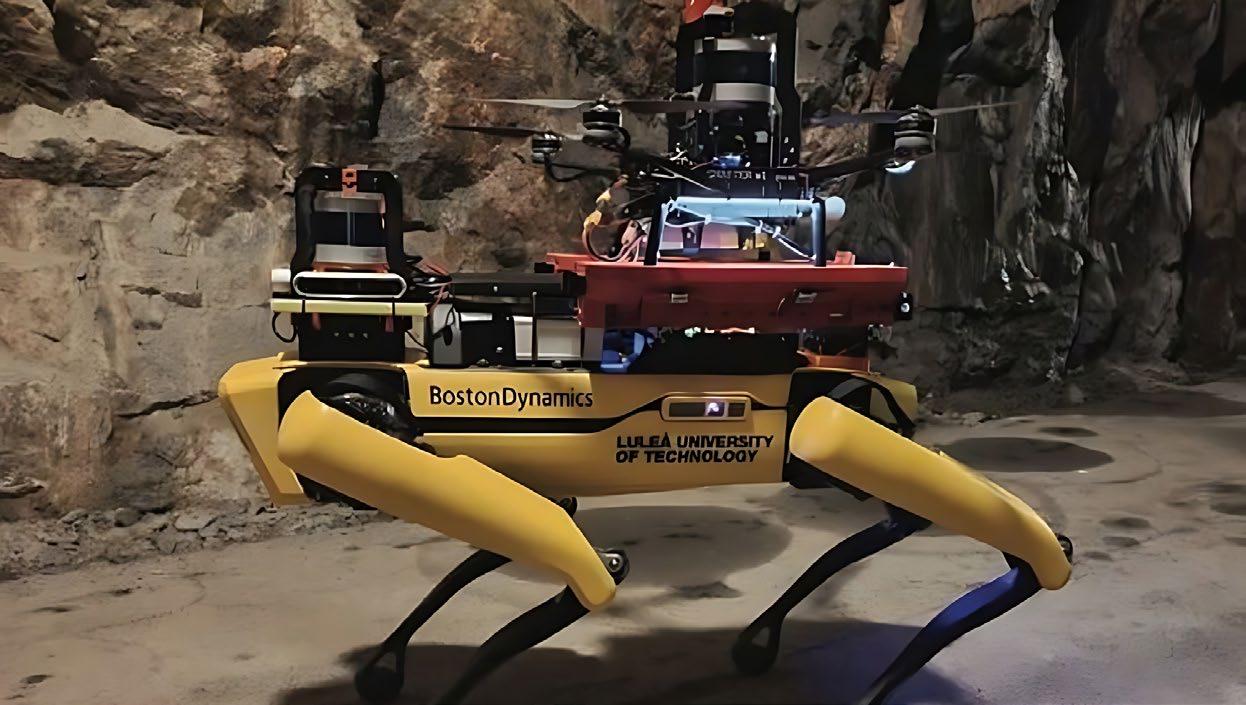
Our collaboration with LTU’s research groups remains a very important component of our work. Today, we collaborate actively with several different areas of research.
Automatic control
Automatic control is “the science of automated systems”. Simply put, automatic control theory is about controlling systems so that they behave as desired.
CONTACT:
Dina Shona Laila, Professor dina.shona.laila@ltu.se +46 (0)920-493448
Biochemical Process Engineering
The subject is bout developing environmental friendly technologies that optimizes how renewable fossil based coal reserves can be used.
CONTACT:
Ulrika Rova, Professor Ulrika.rova@ltu.se +46 (0)920-491315
Cyber-Physical Systems
Focus is on fully integrated software and application architectures with implementations of highly distributed embedded systems. The systems interact with each other and their surroundings to enable secure, goal-oriented, autonomous and developable solutions.
CONTACT:
Jerker Delsing, Chaired Professor jerker.delsing@ltu.se +46 (0)920-491898
Cyber Security
Cyber Security focuses on technical security aspects as well as protection of systems that are connected to the Internet and include protection of software, data, and hardware.
CONTACT:
Karl Andersson, Professor, Dean karl.andersson@ltu.se +46 (0)910-585364
Dependable Communication and Computation Systems
The research subject focus on cyber physical systems and Internet of Things, simulation of complex distributed systems, agent-based architectures and bio-inspired control in complex industrial infrastructures, among other things.
CONTACT:
Valeriy Vyatkin, Chaired Professor valeriy.vyatkin@ltu.se +46 (0)920-492505
Design
Design research is conducted within, among other things, Engineering Technology and development of methods used with modern design technology, multidisciplinary collaboration in design, cultural aspects of global design and ergonomics and design.
CONTACT:
Åsa Wikberg Nilsson, Chaired Professor Asa.Wikberg-Nilsson@ltu.se +46 (0)920-491342
Electric Power Engineering
Electric power engineering covers studies of sustainable systems for production of electrical energy, transport of electrical energy and the interaction between the power grid, electricity production and electricity consumption.
CONTACT: Sara Rönnberg, Professor +46(0) 910-585721 sarah.ronnberg@ltu.se
Electronic Systems
The research subject includes electronic design, measurement technology and electromagnetic compatibility for control, monitoring and instrumentation of technical processes and systems.
CONTACT :
Jonas Ekman, Chaired Professor Jonas.Ekman@ltu.se
+46 (0)920-492828
Energy Engineering
Energy engineering concerns the development of technologies and processes in order to build a sustainable energy supply.
CONTACT:
Marcus Öhman, Chaired Professor marcus.ohman@ltu.se
+46 (0)920-491977
Entrepreneurship and Innovation
The subject deals with development of firms and organizations with a specific focus on business development based on innovative products and services, production solutions or ways to lead and organize activities.
CONTACT:
Vinit Parida, Chaired Professor vinit.parida@ltu.se
+46 (0)920-492469
Experimental Mechanics
Involves the development of experimental methods for studying phenomena within the field of applied mechanics.
CONTACT:
Mikael Sjödahl, Chaired Professor +46(0) 920-491220 mikael.sjodahl@ltu.se
Fluid Mechanics
Focus is on flow through porous media, multiphase flow, flow with free surfaces and in-stationary flow.
CONTACT:
Staffan Lundström, Chaired Professor staffan.lundstrom@ltu.se +46 (0)920-492392
Human Work Science
The research group Human Work Science is part of the Division Humans and Technology. Since 1974, we have conducted research and education within human work science in both technical and social science sectors.
CONTACT:
Lena Abrahamsson, Chaired Professor lena.abrahamsson@ltu.se
+46 (0)920-492107
Industrial Marketing
Industrial Marketing involves activities and processes for creating, communicating, and delivering value to customers and other stakeholders.
CONTACT:
Maria Ek Styvén, Chaired Professor Maria.Styven@ltu.se +46 (0)920-491501
Information Systems
Information Systems covers design and use of information technology in relation to people, organizations and societies.
CONTACT:
Ahmed Elragal, Chaired Professor ahmed.elragal@ltu.se +46 (0)920-493670
Law
The research in law have different legal bases for environmental and natural resources.
CONTACT:
Maria Pettersson, Chaired Professor +46(0) 920-492195 maria.pettersson@ltu.se
Machine Design
With a background in computer-aided computational methods, Machine Design have evolved to work with a research profile that supports simulation-driven product development. The research areas are modeling, simulation and product development.
CONTACT:
Magnus Karlberg, Chaired Professor +46(0) 920-492418 magnus.karlberg@ltu.se
Machine Elements
Machine Elements comprises the analysis and optimization of machine components and component systems in order to enhance performance, longevity, energy-efficiency, reliability and sustainability.
CONTACT:
Roland Larsson, Chaired Professor Roland.Larsson@ltu.se +46 (0)920-491325
Machine Learning
The Machine Learning group targets fundamental and application-oriented research in Machine Learning and Artificial Intelligence, including deep learning, pattern recognition, and
human computer interaction; with applications in digital humanities, education, document analysis, and Industry 4.0.
CONTACT:
Marcus Liwicki, Chaired Professor marcus.liwicki@ltu.se +46 (0)920-491006
Pervasive and Mobile Computing
Pervasive and mobile computing address distributed systems and mobile networks, which enable mobility, ubiquity and interactivity of computers, data, software and users.
CONTACT:
Christer Åhlund, Chaired Professor chister.ahlund@ltu.se +46 (0)910-585331
Polymeric Composite Materials
Polymeric Composite Materials is an area of research that in interaction with other closely related areas constitutes the basis for production and determination of the function of advanced polymer-based composite materials and structural components of today and tomorrow
CONTACT:
Roberts Joffe, Chaired Professor +46(0) 920-491940 roberts.joffe@ltu.se
Robotics and AI
The Robotics team is world class when it comes to Robotics and specifically drone technology.
CONTACT:
George Nikolakopoulos, Chaired Professor george.nikolakopoulos@ltu.se +46 (0)920-491298
Signal Processing
Luleå University of Technology established Sweden’s first professor’s chair in Signal Processing in 1988. Current research areas are flexible radio communications and signal processing methods in measurement technology applications.
CONTACT:
Jaap van de Beek, Chaired Professor jaap.vandeBeek@ltu.se +46 (0)920-493383
Waste Science and Technology
Developing solutions to waste-related problems in society and industry.
CONTACT:
Jurate Kumpiene, Chaired Professor +46(0) 920-493020 jurate.kumpiene@ltu.se

Our aim is to identify highly innovative and novel research findings with technical and commercial potential. We also need to export these ideas to society and companies by creating sustainable business innovation.
Moreover, our research groups at Luleå University of Technology is a key asset of our activities. To secure continuous world class innovations, academic achievements are of great importance to us. Consequently, we measure the number of publications, reports, Doctoral degrees as well as how many Licentiate degrees that were awarded each year.
Professors/
Associate Professors
Anita Mirijamdotter
Anna Ståhlbröst
Birgitta Bergvall-Kåreborn
Dick Schefström
Homam Mokayed
James P LeBlanc
Jeaneth Johansson
Karl Andersson
Kåre Synnes
Malin Malmström
Mari Runardotter
Mikael Wiberg
Olov Schelen
Peter Parnes
Wolfgang Birk
Åsa Wikberg Nilsson
Doctors
Abdolrasoul Habibipour
Ahmed Afif Monrat
Ali Padyab
Anders Lindgren
Anna Ståhlbröst
Anton Koval
Aya Rizk
Björn Lindqvist
Dan Johansson
Daniel Granlund
Dick Schefström
Emad Ibrahim
Eva Källhammer
Frank Sjöberg
Jan-Jaap van de Beek
Jeremiah Scholl
Jil Sutaria
Johan Karlsson
Johan Kristiansson
Johanna Lindberg
John Lindström
Josef Hallberg
Juwel Rana
Kazi Main Uddin Ahmed
Kåre Synnes
Lara Lorna Jimenez
Lars-Åke Larzon
Malin Malmström
Marita Holst
Mikael Degermark
Mikael Drugge
Mikael Sundström
Niklas Karvonen
Nosheen Abid
Olov Schelén
Oluwatosin Adewumi
Per Ödling
Peter Parnes
Raihan Ul Islam
Roland Hostettler
Roland Parviainen
Thomas Pederson
Ulf Bodin
Yulia Berezovskaya
Licentiates
Ahmed Afif Monrat
Ali Padyab
Anders Lindgren
Andreas Jonsson
Andreas Papadimitriou
Anna Ståhlbröst
Dan Johansson
Daniel Granlund
Emad Ibrahim
Frank Sjöberg
Gerasimov Damigo
Helena Oskarsson
Jeremiah Scholl
Johan Karlsson
Johan Kristiansson
Johan Nykvist
Josef Hallberg
Josefin Lassinantti
Karl Löwenmark
Kåre Synnes
Lars-Åke Larzon
Laurynas Riliskis
Lena Palmqvist
Marcus Nilsson
Martin Sehlstedt
Mats Folke
Matthias Wahlqvist
Mikael Drugge
Morteza Alizadeh
Nosheen Abid
Oluwatosin Adewumi
Pierre Fransson
Prakash Chandra Chhipa
Raihan Ul Islam
Richa Upadhyay
Richard Nilsson
Robert Granlund
Roland Parviainen
Samir Kabir
´Stefan Elf
Tomas Nilsson
Ulf Bodin
Ulrika Wiss

CDT supports and finances the commercialization process of research innovations. A powerful way to do this is the generation of commercial spin-off companies. Since start, CDT has been involved in the forming of many spin-off companies based on academic research from Luleå University of Technology. The creation of these companies is beneficial to local economic development in the region.
Actegra – A design, product development and manufacturing company of electronic equipment for wireless communications and positioning. The concept behind the company arose in year 2009. In 2011, the collaborations with the CDT project “Sense Smart City”, was one of the factors that led to that the company expanded its activities and registered as a limited liability company. www.actegra.se
iGW – A company focusing on a developing infrastructure for collection, management and visualization of large amounts of data. www.igw.se
Oricane AB – The target customers of the company are vendors of software based network equipment, such as routers and firewalls, as well as vendors of custom hardware classification engines for high-end network equipment, 2006. www.oricane.se
Parnes Labs – Realizes dreams in the realm of development for the Web, Android, iPhone/iPad and just about anything related to the Internet! www.parnes.com/labs
Adela Innovation AB – A company developing products and services within area of enabling people to receive and listen to speech news-papers, 2008. www.adela.nu
Rubico AB – A company targeting the Swedish market for digital audio newspaper receivers/recorders, 2004. www.rubico.se
Operax AB – Operax develops key technology for data and telecommunication over Internet and Intranet within fixed and mobile systems, 2000. www.operax.com
Marratech AB – An Internet company developing products and services, which facilitate meetings between people on Internet, so called e-meetings, 1998. Bought by Google 2008, now a part of Google toolbox. www.marratech.com
Effnet AB – A developer of Internet Protocol (IP) header compression technologies, 1997. www.effnet.com
IT Norrbotten AB – A regional development company with the objective to create economic growth and develop work and industry in Norrbotten, 1996. www.itnorrbotten.se
Bollen Labs – A company that experiment with new ways to interact with computers, and new types of data visualization. www.bollenlabs.com
Skylite Affärsutveckling AB - The company offers qualitative services in digital business development, with expertise in project management, collaboration development, Business Intelligence and Artificial Intelligence. www.skylite.se
Team Tools Sweden AB - A company that develops simple and effective digital services for managing financial flows, administration and incomegenerating activities in associations. www.teamtools.se

Royal Skyttean Society’s Prize
Wiebke Reim at LTU won the prize 2024.
Power Woman of the Year NOMINATION
Sara Rönnberg, LTU, nominated 2024.
Finalist for Best New Mining Innovation
Partner company Thingwave nominated at InvestMETS in Australia 2024.
AMBASSADOR OF THE YEAR FOR ADVANCED DIGITALISATION
Karl Andersson, CDT, LTU, won Vinnova’s Ambassador of the Year Award for Advanced Digitalisation 2023.
Infra Awards
The project Predictive Movement won second place in Infra Awards in 2021.
Winner: Datatadriven innovation
The project Predictive Movement won “Sveriges paketombud” and their data driven innovation challenge in 2020.
IM 100
CDT’s project manager Annika Svensson was named by the organization Infrastructure Masons as one of the 100 most important people who have contributed to the industry in 2020.
Finalist: Challengegov
The project Predictive Movement was finalist in the Challengegov competition in 2020.
New entrepreneur of the year
Partner company Team Tools won “New entrepreneur of the year” at the Boden Business gala in 2020.
Best Impact Maker
Team Pay was awarded best Impact Maker in the Venture Cup Regional Final in Start-up, Region North 2019.
Norrbotten’s Equality Award
NOMINATION
Paula Wennberg at CDT was nominated to Norrbotten’s Equality Award 2019.
Norrbotten’s Equality Award
NOMINATION
Paula Wennberg at CDT was nominated to Norrbotten’s Equality Award 2016.
Young Researcher Prize
Awarded Associate Senior Lecturer Damiano Varagnolo, Luleå University of Technology in 2015 from Norrbottens Forskningsråd.
Best Exhibitor
Awarded the CDT project USEMP during the ICT Days 2015 in Lisbon.
Spin-off of the year
The CDT spin-off company KYAB receive the award “Spin-off of the year 2013” from the Luleå University of Technology.
Ericsson Patentable Invention Award
Award received by Ph D student Juwel Rana, LTU, Associate Professor Kåre Synnes, LTU and Stefan Håkansson and Johan Kristiansson at Ericsson in 2012, Sweden.
Best Student Paper Award
The International Conference on Social Computing and its Applications awarded Juwel Rana, Kåre Synnes and Johan Kristiansson “Best Student Paper Award”, in November 2012, in Xiangtan, China.
IT Personality of the Year
Dataföreningen i Norr, awarded Professor Christer Åhlund “IT personality of the year 2012”, in Skellefteå, Sweden.
Best Idea
Awarded the research project Sense Smart City at the European summit on the future of Internet in Luxembourg, 2011.
IT Organization of the Year
Awarded CDT in year 2011 from the IT society in Norrbotten, Sweden.
Chester Carlson Prize NOMINATION
Finalist Mikael Sundström in 2009 by IVA for efficient compression, storage and retrieval of information.
Best Paper NOMINATION
Awarded Bigitta Bergvall-Kåreborn, Marita Holst and Anna Ståhlbröst for “Concept Design with a Living Lab Approach at HICSS-42 at Big Island, Hawaii, in 2009.
SBAPA Award
Received by Kimmo Yliniemi (KYAB) in 2008.
Mobile Technology of the Year 2008
GULDMOBILEN
Awarded Oricane in 2008.
The Competence Gala´s Great Honorary Prize
Shared by Östen Mäkitalo and Anton Abele in 2008.
European Grand Ict Prize FINALIST
Awarded Operax AB in year 2007 by the European Commission.
Best Presentation Award
Awarded Mikael Sundström at ItechPartner Forum in Porto, Portugal, in 2007.
Best Paper
Awarded Christer Åhlund, Robert Brännström, Karl Andersson, and Örjan Tjernström for ”Multimedia Flow Mobility in Heterogeneous Networks Using Multihomed Mobile IPv6” at The 4th International Conference on Advances in Mobile Computing and Multimedia in Yogyakarta, Indonesia, in 2006.
Best New-Establishment In Luleå Rubico AB, a CDT-offspring, awarded for the best new establishment in Luleå in 2006.
Competitive Regions Best Practice 3
VITAL Project selected for presentation in Magdeburg, Germany, 2005.
Best Student Paper
Awarded Anna Hedman, David Carr, Hans Nässla in year 2004 for “Browsing thumbnails: A comparison of three techniques” by ITI2004 in Croatia.
Ericsson Inventor of the Year
Awarded Krister Svanbro at Ericsson in year 2001 for Header compression by Ericsson.
No 1 Swedish Research Project
Awarded Rocco project in 2000 by magazine Ny Teknik.
No 1 Swedish Researcher
“Chester Carlson Prize”
Awarded Mikael Degermark in year 2000 for “high performance routing” by IVA.
European Grand IST Prize - 1st place
FINALIST
Awarded Marratech AB in year 2000 in Nice by the European Commission.
Best Paper
Awarded Mikael Degermark in year 2000 for “high performance routing” by ACM/SIGCOM.
European Grand IST Prize (1st)
Awarded Effnet AB in year 1999 in Helsinki by the European Commission.
1st Prize In Swedish Innovation Cup 1998: Brodnik/Carlsson/Degermark/Pink – The Luleå Algorithm

CDT is mainly financed by institutional sources, both nationally and internationally. This is for example EU framework programs and structural funds, along with national and regional governments.
CDT is a non-profit organization. Nonetheless, a strong financial position helps us achieve our goals by being able to better support the projects we are involved in.


CDT offers an integrated environment for efficient cross-border collaboration between universities, commercial companies, governments and end users.
Our partners come from different organizations and working cultures, located at different geographical sites. CDT’s goal is to be a preferred R&D partner and meeting place. We have for several years invested in building long-term alliances with
selected national and international scientific communities as well as business partners.
Today, we consider our network one of our strongest assets, including many companies, organizations and research centres.
CORE PARTNERS
Luleå University of Technology
Ericsson
Skellefteå Municipality
COMPANIES
Swedish SME:s
11 Sustainable systems
Aerobase
Arctic Falls
Arctic Games
Arctic Space Technologies
Atjoo
Beep Insights
BI Nordic
BIM Ctrl
Blamorama Games
Colmis
Curest
Data Ductus
Earhart
Effnet
Elastisys
Electrotech Kalix
Evity
Flasheye
Gemometrics
Icemakers
IETV
Insightgap Psychology
Iteams Solutions
Lumire
mBiz
MeWe&You Health
Mitt Häfte i Sverige
Noah International
Northify
Nuiteq ONar
Optimation
Origon Utveckling
Peckas Tomater
Remos Space Systems
Safe Spring Senseworks
Skyresponse
Softhouse
Susanns Livs AB
ThingWave
Tjintokk
TNT
upKeeper Solutions
XLENT
Swedish Industry
ABB
AFRY
Bodens Energi
Boliden
Hexatronic Cables & Interconnect
Hitachi Energy
Infovista
LKAB
Luleå Energi Lumire
Northvolt
Pite Energi
Radio Innovation
Scanmast
Skellefteå Kraft
Stegra
Sweco
Swerim
Telia Towers
Telia
Uniper
Vattenfall
Övik Energi
International companies
DataRiver, Italy
Frontida Zois, Greece
Funlus, Finland
Hellenic
Telecommunications Organization, Greece
Italtel, Italy
PIKEI New Technologies, Greece
RE:LAB, Italy
SAMMY, Greece
PUBLIC SECTOR
Municipalities, Regions
Boden
Council of Oulu Region, Finland
Dalarna County
Dorotea Kalmar County
Ljusdal
Luleå
Lycksele
Municipality of Egaleo, Greece
Norsjö
Piteå
Region of Western Greece
Skellefteå
Storuman
Umeå
Västervik
NON-PROFIT ORGANISATIONS
Arctic Business Incubator
BD Pop
Brainport Development, The Netherlands
Boden Business Agency
Cluster Health, Emilia-Romagna, Italy
Clust-ER Innovate, Emilia-Romagna, Italy
Cluster SCC, Lombardia, Italy
Filmpool Nord
Fjällräddningen
Frivilliga Flygkåren
Insamlingsstiftelsen för totalförsvarsstudier
IT Norrbotten
IT-branschrådet Luleå
IUC Norr
Laevas sameby
LTU Business
Luleå Science Park
Luleå skärgårdsförening
Skellefteå Science City
Skellefteå Digital Alliance
Sveriges paketombud
Uminova
Unboxx
Småskärens intresseförening
Skogforsk
Statens Veterinärmedicinska Anstalt (SVA)
Totalförsvarets Forskningsinstitut (FOI)
Trafikverket
Samarkand2015
SPGA
UNIVERSITIES AND RESEARCH INSTITUTES
Lapin University of Applied Sciences
Lund University
University of Oulu RISE
Savonia University of Applied Sciences
Swedish University of Agricultural Sciences SLU
Umeå University
University of Patras
SPONSORS
Formas
Handelskammaren i Norrbotten
Handelskammaren i Västerbotten
Horizon Europe
I3-programme
Interreg Aurora
Luleå Municipality
Lycksele Municipality
Norsjö Municipality
Region Norrbotten
Region Västerbotten
Skellefteå Kraft
Sorsele Municipality
Tillväxtverket – ERUF
Umeå Municipality
Vilhelmina Municipality
Vinnova
Åre Municipality

One of CDT’s main tasks is to initiate and coordinate innovation projects. In most of our projects, research from Luleå University of Technology is combined with real-world applications. During a project, important resources are created, such as architectures, new technologies, methods and models. If the projects prove to be very successful, the results can lead to innovations in the form of products, services, prototypes or business concepts.

The project AMBITIOUS aims to advance the state of the art in AI, 5G and IoT and to promote interregional collaboration and commercialisation.
It demonstrates its solutions through seven use cases based on existing 5G testbeds in Sweden, Finland Greece and Italy. By providing funding, testbeds and support, the project enables SMEs to compete globally, improve security measures, minimise energy waste and improve their innovation pathway to eventually integrate into EU value chains. The consortium consists of 10 SMEs, 1 large company, 1 region, 1 municipality, 4 universities and 1 research institute and includes both the demand and supply side. The main funder is the EU and the project is led by Luleå University of Technology.
www.ambitious-project.eu
PROJECT PERIOD: October 2023 - September 2026
CONTACT: Karl Andersson karl.andersson@ltu.se +46 (0) 910-585 364

Arctic 6G
The main goal of the project is to develop, demonstrate and disseminate new technologies that will improve the societal resilience of future 6G networks in the Aurora region.
Key targeted outcomes include:
- Development of new quantitative tools to evaluate and measure inequality in cellular coverage
- Development of new, energy-efficient 6G technology for rural and remote areas, new IoT device location methods and improved network security features
- Develop understanding of Sapmi and reindeer herders’ connectivity needs
The project is financed by EU Interreg Aurora and Region Norrbotten, led by Luleå University of Technology and CDT with the partners Oulu University and LAPIN AMK.
www.arctic6g.se
PROJECT PERIOD: December 2022 - November 2025
CONTACT: Michael Nilsson +46(0)70- 288 45 20 michael.nilsson@ltu.se

Digital 2030
New
Digitization within Cloud, Edge, IoT. For small and medium-sized companies in North Sweden.
The project wants, through innovation, product development and business development, to increase companies’ ability to become prominent players within this growing regional ecosystem and to contribute to a smarter use of advanced technology, 5G and Edge test environments as well as research and innovation activities within the industry area.
Main financiers are the European Regional Fund, Region Norrbotten and Region Västerbotten.
www.digital2030.se
PROJECT PERIOD: January 2024 - April 2027
CONTACT: Jan-Olov Johansson jan-olov.johansson@ltu.se +46 (0) 920-491209

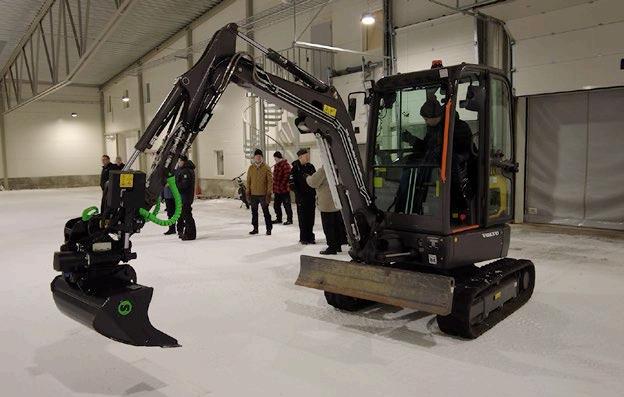

The project’s main idea is to connect world-class research with innovative hightech companies and the public sector and develop innovative and ground-breaking technical solutions for energy management systems with simulation tools and digital twins.
The goal is for energy efficiency measures, implementation of new loads, energy storage and local energy production to be handled in the simulation tool and the digital twin. The idea is that the solutions should be able to be used for the continued development of neighborhoods where lack of power is a limiting factor, where we adapt consumption within the local network to enable new properties or other loads to develop. As a case study, the Skellefteå campus has been selected. The project is financed by VINNOVA, led by Luleå University of Technology and CDT with partners such as Skellefteå Municipality, Skellefteå Kraft and ABB.
https://digitalstadsutveckling.se
PROJECT PERIOD: August 2022 - December 2025
CONTACT: Karl Andersson karl.andersson@ltu.se
+46(0)70- 819 54 84

The project is part of a broader initiative to accelerate the green transition in Upper Norrland with the goal to develop smart energy systems, grids, and innovative storage solutions outside the trans-European energy network (TEN-E), focusing on the sustainable integration of electromobility.
By establishing testbeds in public environments, the project aims to create support structures for a rapid shift to fossil-free energy systems. Through nine public demonstrations across regional municipalities, the project will showcase how rural areas can become a testbed for the EU’s future energy systems.
Main funders are European Regional Development Fund, Region Norrbotten and Region Västerbotten.
PROJECT PERIOD: July 2024 – June 2027
CONTACT:
Björn Backe
+46 (0) 920-492111 bjorn.backe@ltu.se

Green Transition North includes 13 subprojects aimed at smart energy systems and circular economy. The projects are carried out in close collaboration with industry within the green transition and with a focus on small and medium-sized companies in northern Sweden.
The goal is to focus on research, development and innovation within the region’s SMEs to make them even more competitive and relevant in the ongoing green societal transformation. The project involves the most important actors in the green transition and their need for knowledge to create businesses and products with high circularity, i.e. minimal use of non-renewable resources.
The project is a collaboration between researchers and 15 companies within the green industrial transition in northern Sweden. The project is led by Luleå University of Technology, CDT. Project partners are LTU Business, Boden’s development, IUC Norr and Skellefteå Science City. Financiers are the European Regional Development Fund, Region Norrbotten, Skellefteå Municipality, Luleå University of Technology and participating industrial companies.
www.greentransitionnorth.se
PROJECT PERIOD
April 2023 - March 2026
CONTACT : Michael Nilsson
+46(0)70- 288 45 20 michael.nilsson@ltu.se



The project drives innovation and development forward through applied AI and advanced digitalization, aiming to strengthen the competitiveness of the region’s businesses.
The project actively supports small and medium-sized enterprises in Upper Norrland in their digitalization and innovation journeys. By combining research, technological development, and close collaboration with industry, we create solutions that enhance companies’ competitiveness and foster future innovations.
MARTINA stands for Multiple ARTificial intelligence INnovations - Again.
Main funders are European Regional Development Fund, Region Norrbotten, Skellefteå Municipality and Luleå Municipality.
www.martinaprojektet.se
PROJECT PERIOD: September 2024 – August 2027
CONTACT:
Björn Backe +46 (0) 920-492111 bjorn.backe@ltu.se
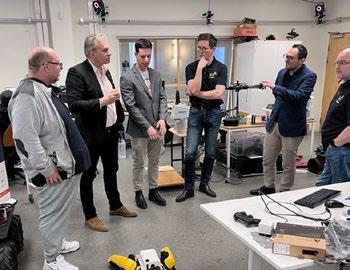
6G will revolutionise digital society in 2030 and beyond with ground-breaking access technologies. SUNRISE-6G aims to unite private and public infrastructures under a scalable, internet-like architecture.
It will create a federation of 6G test infrastructures across Europe for Testing as a Service (TaaS) workflows and offer a unified catalogue of 6G enablers.
The project focuses on four key pillars:
• Implementation of new 6G enablers
• Establishing a scalable and 3GPP federation solution
• Adopting a federated AI layer
• Provision of a standardised experimentation plane for joint workflows
Main funder is EU.
www.sunrise6g.eu
PROJECT PERIOD: November 2023 – November 2026
CONTACT: Michael Nilsson michael.nilsson@ltu.se
+46(0)70-288 45 20


The project aims to scale up industrial pilots in the area of wireless ICT.
Collaborating parties will join the forces to scale up vertical pilot cases into full-scale cross-European value chains and sustainable business cases, aiming to industrial pilots utilising fast, reliable, secure, and energy-efficient wireless ICT. Approach used to the prepared pilots is from bottom-up, listening carefully to the needs of the companies. Active participation of regional governments will ensure alignment between the business and the societal challenges thus making the value chains robust on a long-term perspective.
Thematic working areas are
• Health
• Future sustainable industry
• Autonomous vehicles
• Smart cities/regions
PROJECT PERIOD : December 2022- June 2025
CONTACT:
Michael Nilsson
+46(0)70- 288 45 20 michael.nilsson@ltu.se


VISA/5G
VISA/5G stands for Vendor Independent Substation Automation over 5G.
One of the biggest advantages of edge computing is the ability to run time-critical protection and control applications on-site. This combination of low latency and edge computing capabilities offered by 5G is very attractive for power grid protection and control. In this scenario, both centralised and distributed automation architectures are conceivable, and a vendor-independent approach can be explored.
This project, together with partners Hitachi Energy, IETV, Ericsson AB, Telia, Metrum and Luleå University of Technology (LTU), will demonstrate vendor-independent substation automation over 5G (VISA /5G) in two scenarios: LTU’s 5G testbed and edge computing cluster, and Vattenfall’s real substation.
Project partners are Vattenfall, Hitachi Energy, IETV, Metrum, Telia, Ericsson AB. The main financier is Vinnova.
www.visa5g.se
PROJECT PERIOD: January 2023 - December 2025
CONTACT:
Björn Backe
+46 (0) 920-492111
bjorn.backe@ltu.se

The project aims to create more intelligent mining systems that will further push the boundaries of autonomy, productivity and security.
The project will work with pilot demonstrations of 5G-connected drones in a mining environment, innovative use of modern AI technology and a hardware and software stack for edge-to-cloud applications. Examples of applications that will be developed include real-time video analysis, autonomous navigation, time-synchronized seismic sensors, augmented / virtual reality, etc.
The project is funded by VINNOVA, NextGenerationEU. It is led by Luleå University of Technology and CDT with parties such as RISE, BI Nordics, ThingWave and Softhouse
PROJECT PERIOD: November 2021 - November 2024
CONTACT: Karl Andersson karl.andersson@ltu.se +46(0)70- 819 54 84

The Rural ICT Testbed project works to prevent digital exclusion by increasing mobile coverage in rural areas.
The project creates opportunities for people to live and work throughout the country. The long-term goal is to create attractive and competitive areas in rural areas with access to mobile coverage.
www.fulltäckning.se
PROJECT PERIOD: January 2021 - June 2024
CONTACT: Karl Andersson karl.andersson@ltu.se
+46(0)70- 819 54 84


The project will work to enable salable and sustainable music production regardless of geographical location.
A virtual music studio will be created and in a 5G testbed the project will work on reducing obstacles such as delay. Collaboration and creative processes will also be developed through research. The work will take place cross-border and location-independent between the music/games industry, academia and business developers.
Parties involved are BD Pop and Luleå University of Technology. Main financiers are the European Regional Development Fund, Region Norrbotten, Luleå Business Region, Skellefteå municipality and Sparbanken Nord.
PROJECT PERIOD
December 2022 - March 2026
CONTACT:
Michael Nilsson
+46(0)70- 288 45 20 michael.nilsson@ltu.se
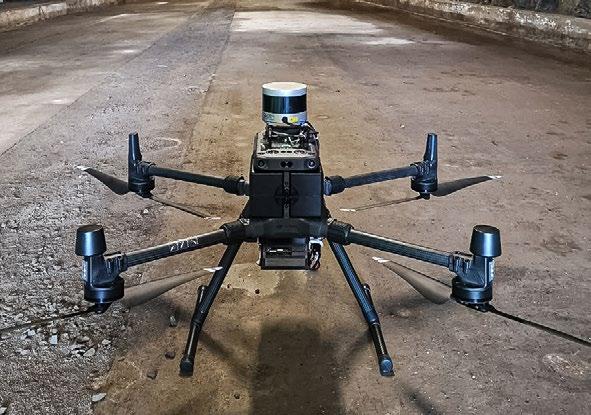

We are pleased to welcome Dr. Petter Kyösti as Project Manager at CDT. Petter joins us from his last position at RISE, where he led a team of AI researchers. As a Doctor, his research covered areas such as product lifecycle extension, automation solutions and zero-defect manufacturing in the context of Industry 4.0.
Can you tell us about your background and what led you to apply for this position?
– I am originally from Piteå, studied mechanical engineering at LTU, and completed my doctorate there as well, specialising in computer-aided design. I was most recently at RISE, where I led a group of AI researchers. Before that, I worked at LTU in another research centre. I have always been interested in working with research and innovation.
Which research areas are you currently most interested in?
– Computer vision, language models, data analysis, industrial digitalisation, data interoperability and physics- informed AI.
What motivates you in your work?
– Working at CDT offers the opportunity to collaborate with companies on research applications. CDT also has a unique focus on regional projects, which is of course particularly appealing.
What types of projects will you be working on?
– The Green Transition North project in the field of research and innovation with the aim of the green transition, targeted towards local and regional companies. This project is linked to the significant industrial and social investments that are currently underway in Upper Norrland. Another project is MARTINA, which focuses on small and medium-sized enterprises in Norrbotten and the municipality of Skellefteå. The project aims to provide support and increase competence in AI and advanced digitalisation. This will be achieved through a series of pilot studies that will be developed during the project period.
What do you like to do when you’re not working?
– I live with my family, which includes my wife Sara and our children Frans and Ylva, in a house in Skurholmen in Luleå. I like to spend my free time with my family or by exercising at the gym, skiing or hiking in the mountains.

We are delighted to welcome Sara Sällström as CDT’s new project manager! In an interview we had the opportunity to get to know Sara a little better. She told us about her background, her new role and what she is looking forward to here at CDT.
Hello Sara, and welcome to our team! Can you tell us about your background and where you have worked before?
– I most recently worked at Tillväxtverket as a project advisor for the regional fund in Upper Norrland. Before that, I worked at the Swedish Public Employment Service in the project “More food – more jobs”, where I worked as a coordinator for Västerbotten and Norrbotten. I was also project manager for the Youth Activator Network at Spira Mare 2020, a project to engage and activate young people in rural areas. I have also worked as a programme developer at the Swedish Association for Adult Education.
You also studied here at Luleå University of Technology. What did you study?
– Yes, I have a Bachelor’s degree in Sociology and have studied the Master’s programme in Investigation. Actually, I am still a student as I am currently taking the independent course in Creative Writing.
Why did you apply for the position of Project Manager at CDT?
– I find it fulfilling to work on projects where I can make a tangible difference and effect positive change. What motivates me is the opportunity to influence society in a positive direction.
What projects will you be working on?
– I will be working on the music and 5G project Let’s Create Music as well as the EU co-operation project AMBITIOUS. I have also started working on an application in the field of gender equality, which is very close to my heart.

Is there anything you particularly enjoy working with or are particularly interested in?
– Yes, the opportunity to make a difference and be part of change processes. I enjoy working in creative project environments where we develop solutions to real problems. Change work fascinates me – I want to understand, contribute and be an active part of the project activities. Seeing real results of my work gives me motivation.
What is your first impression of CDT?
– My first impression is that it is a very creative and dynamic group. The team seems to be open to new ideas and everyone is keen to find solutions that create real added value.

Björn Backe
Executive Director
bjorn.backe@ltu.se
+46 (0)920 49 21 11

Michael Nilsson
michael.nilsson@ltu.se
+46 (0)70 288 45 20

Jan-Olov Johansson
jan-olov.johansson@.ltu.se
+46 (0)70 619 22 31

Marie Nolin marie.nolin @associated.ltu.se
+46 (0)72 526 20 70

Annika Svensson
annika.c.svensson @associated.ltu.se
+46(0)70 591 04 23

Sara Sällström sara.sallstrom@ltu.se
+46 (0)920 49 36 52
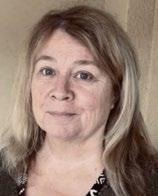
Annica Bray annica.bray@associated.ltu.se
+46 (0)70-600 18 06


Jan Pettersson jan.pettersson @associated.ltu.se
+46 (0)70 242 68 04
The CDT board of directors has approved the CDT annual report 2024. Luleå, March 2025.

Markus Andersson Ericsson Research

Michael Carlberg Lax Skellefteå Municipality
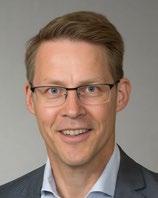
Niklas Lehto Luleå University of Technology

Ida Lindh Skellefteå Municipality

Jaap Van De Beek Luleå University of Technology

Mats Nordberg Acting Chairman Ericsson Research

Petter Kyösti petter.kyosti@ltu.se
+46 (0)70-2841196
CDT offers an integrated environment of people, infrastructure, tools, processes and services for research, development, innovation and test.
• Foster and develop strategic partnerships
• Provide access to valuable networks and key contacts
• Initiate and lead collaboration projects at regional, national, and international levels
• Develop and provide test beds and system demonstrators in fields such as 5G, 6G, and Edge computing
• Support and accelerate new researchers and research topics by assisting with applications and projects
• Bridge disciplines, organizations, and cultures, working across subject areas and national borders
• Shape funding programs, innovation strategies, and forward-looking policies to drive technological and societal progress

Luleå University of Technology, SE-971 87 Luleå. Phone: +46 (0)920 49 10 00. E-mail: cdtinfo@ltu.se, www.ltu.se/cdt
